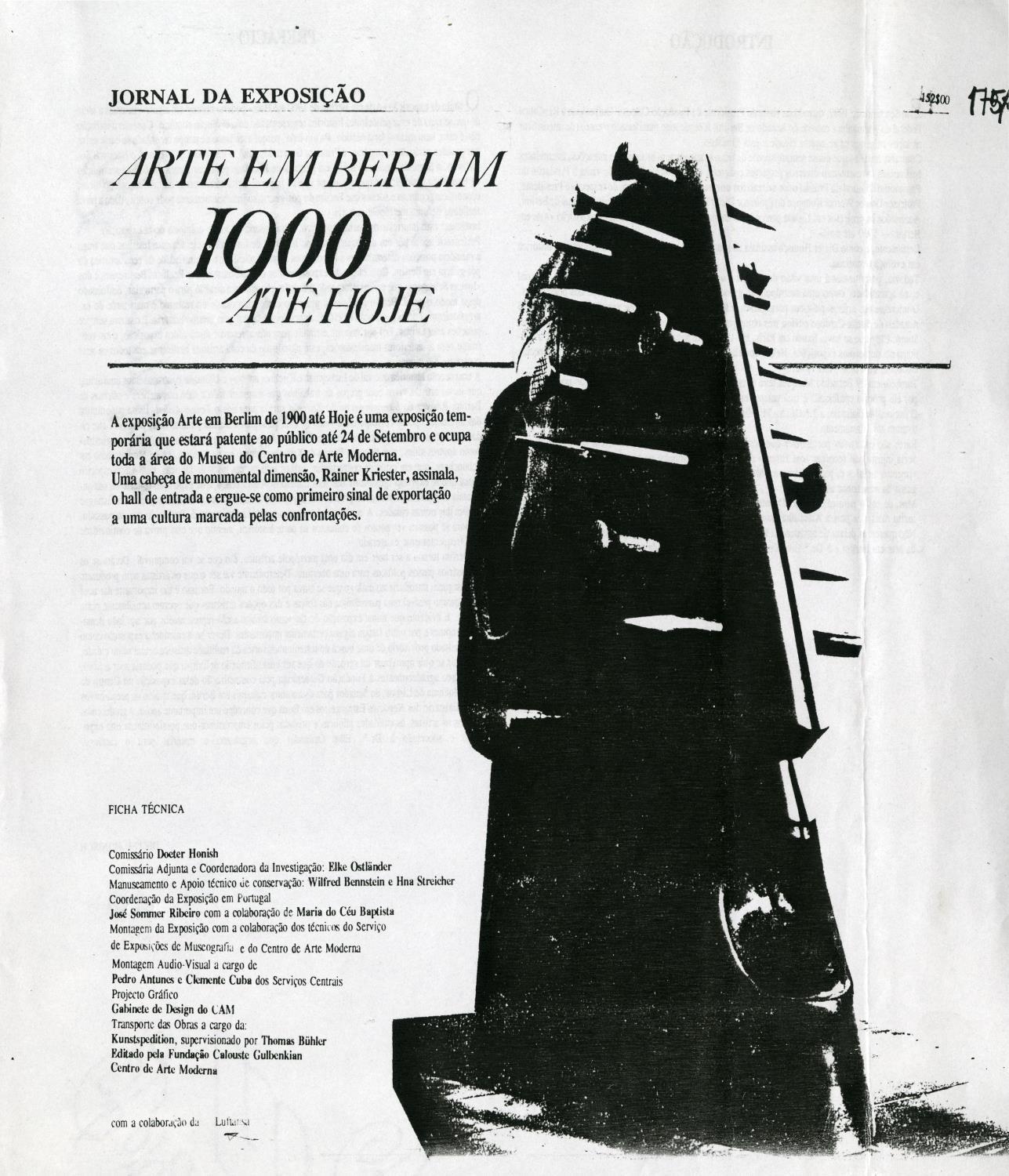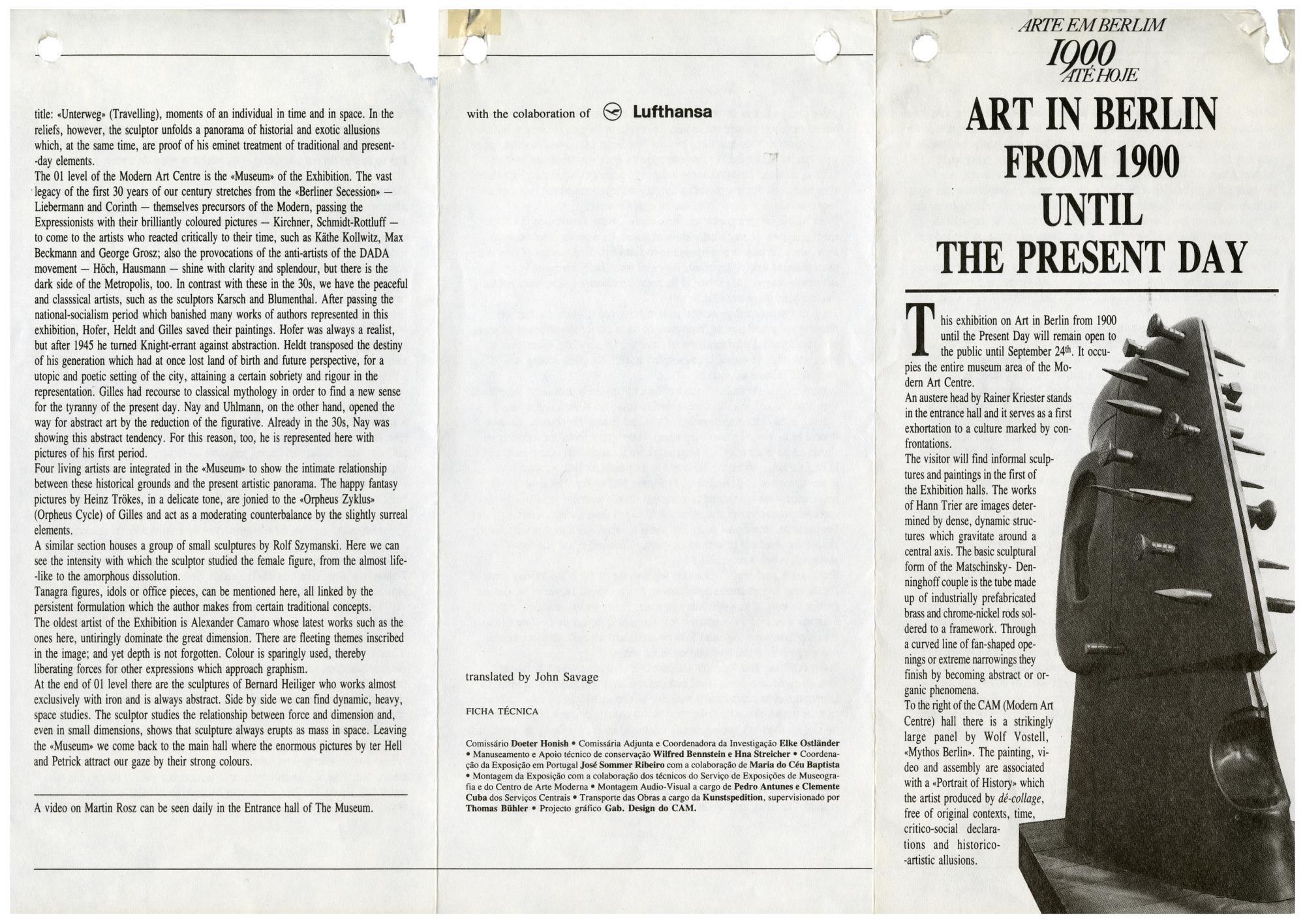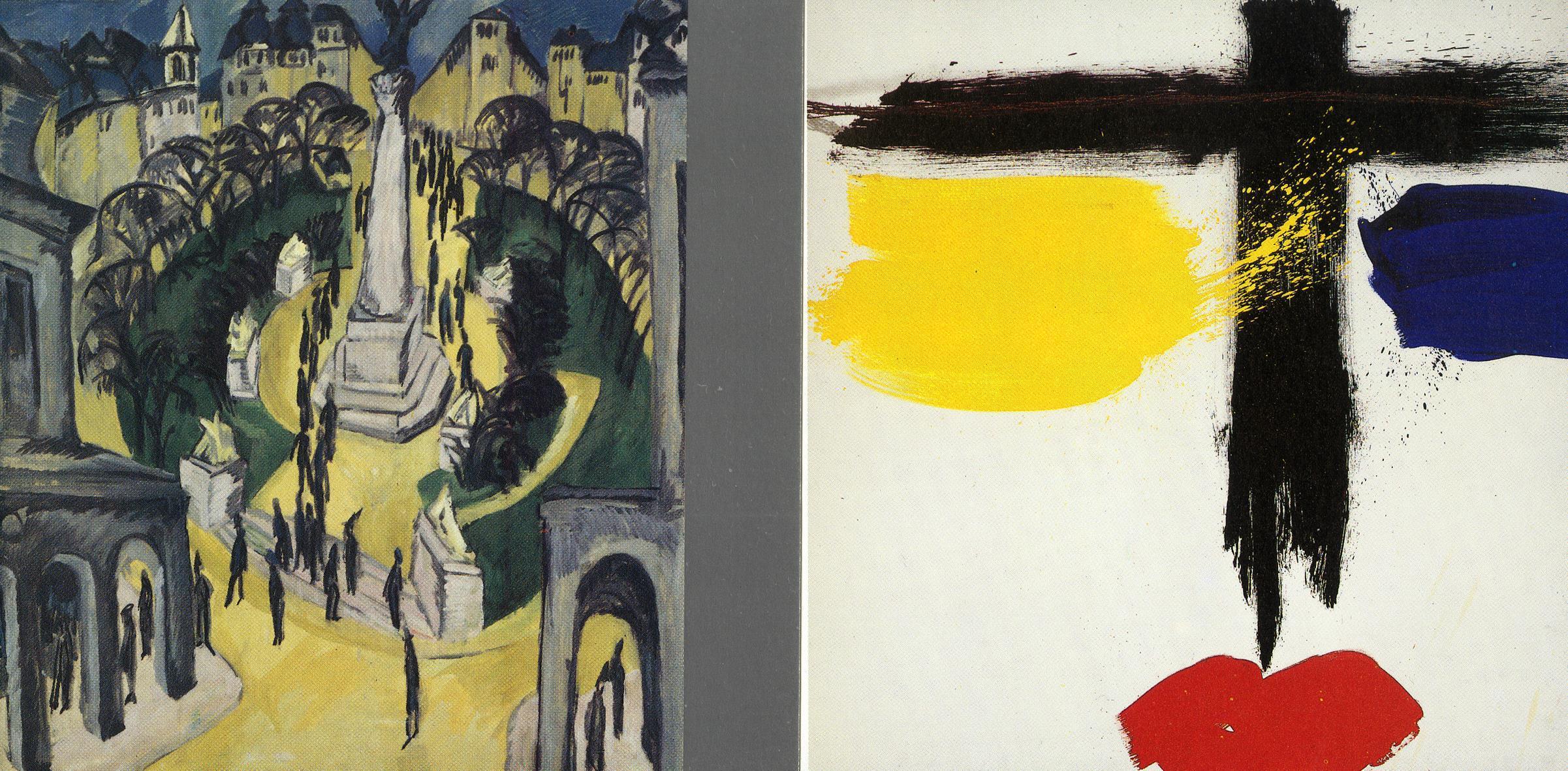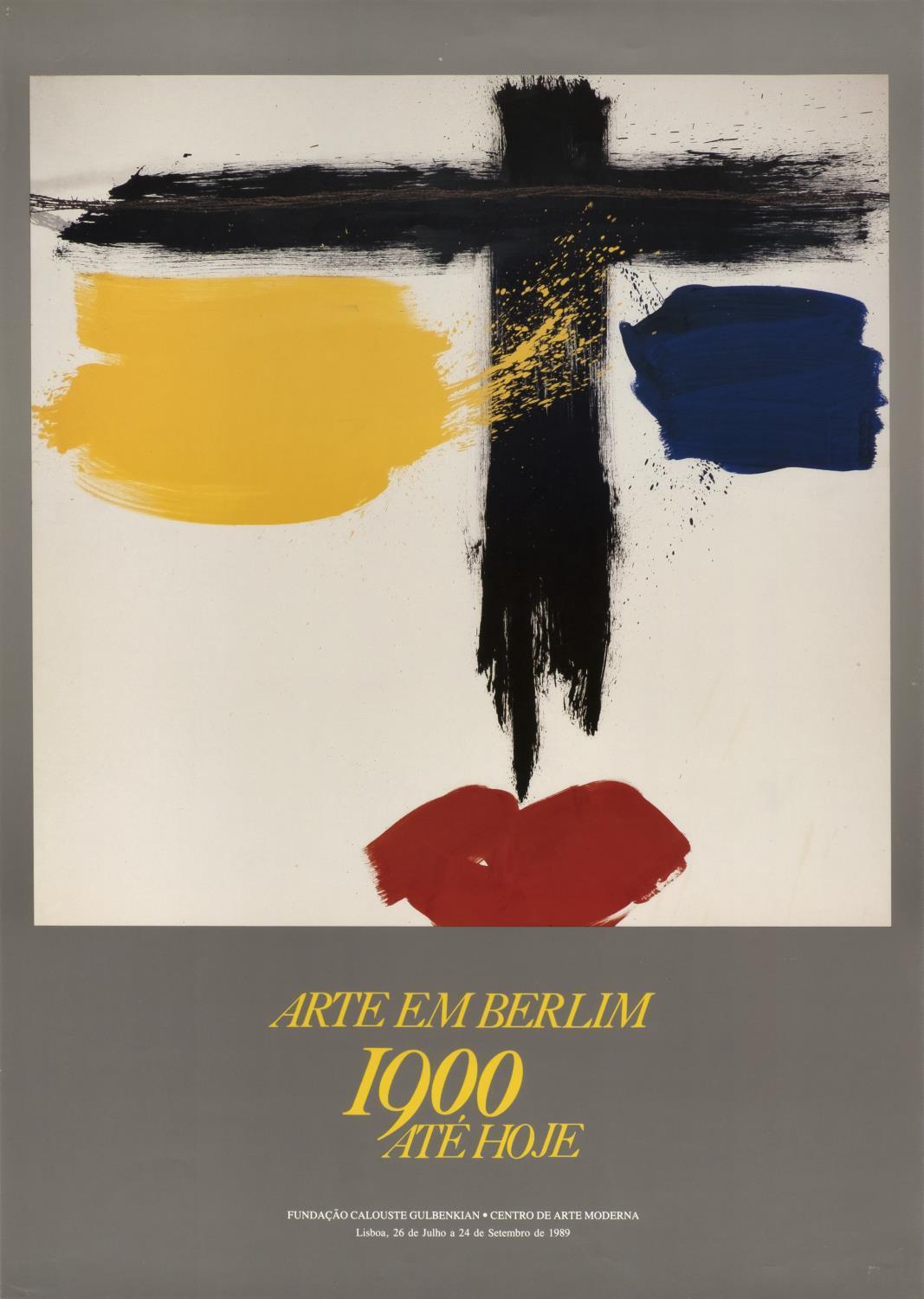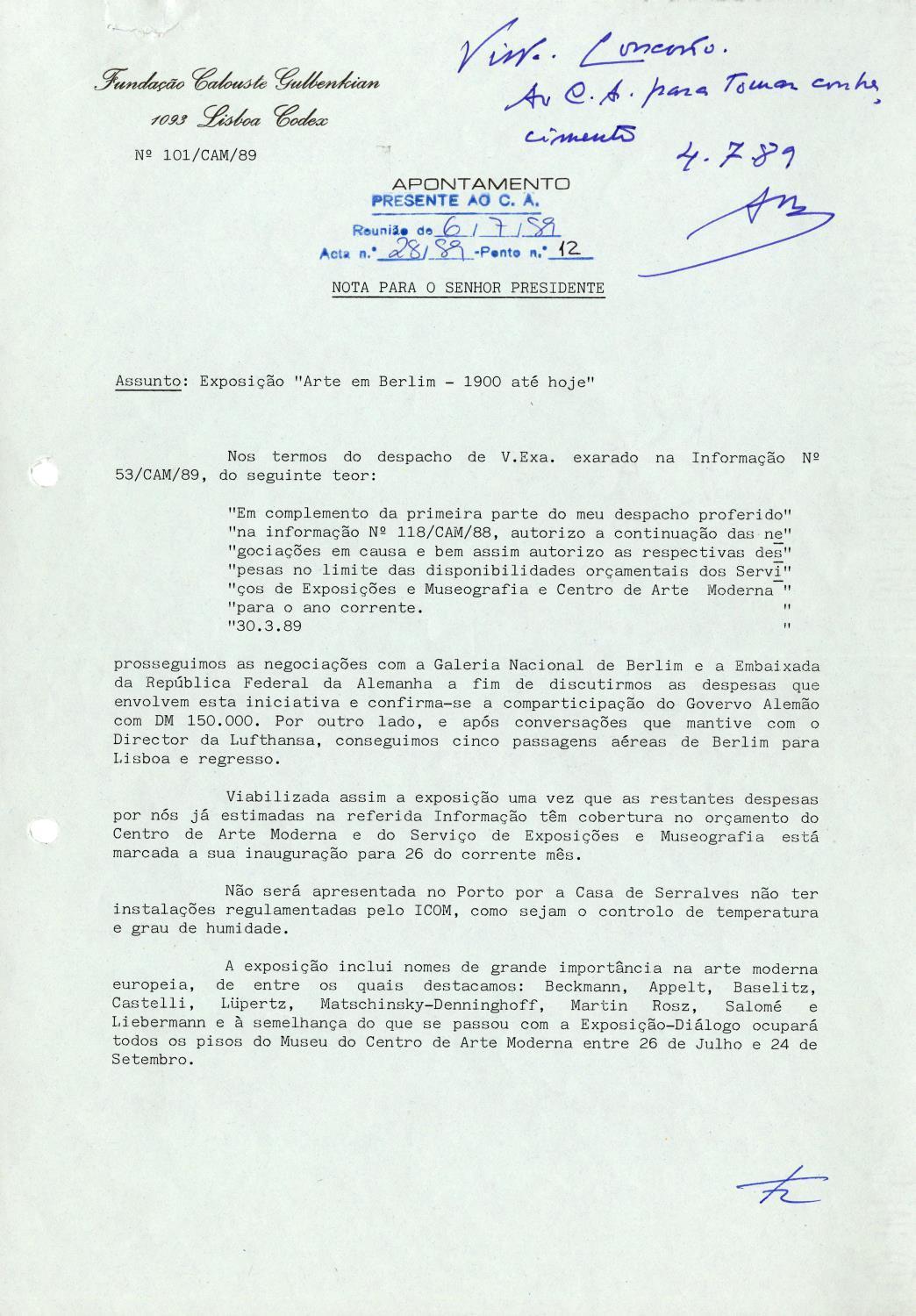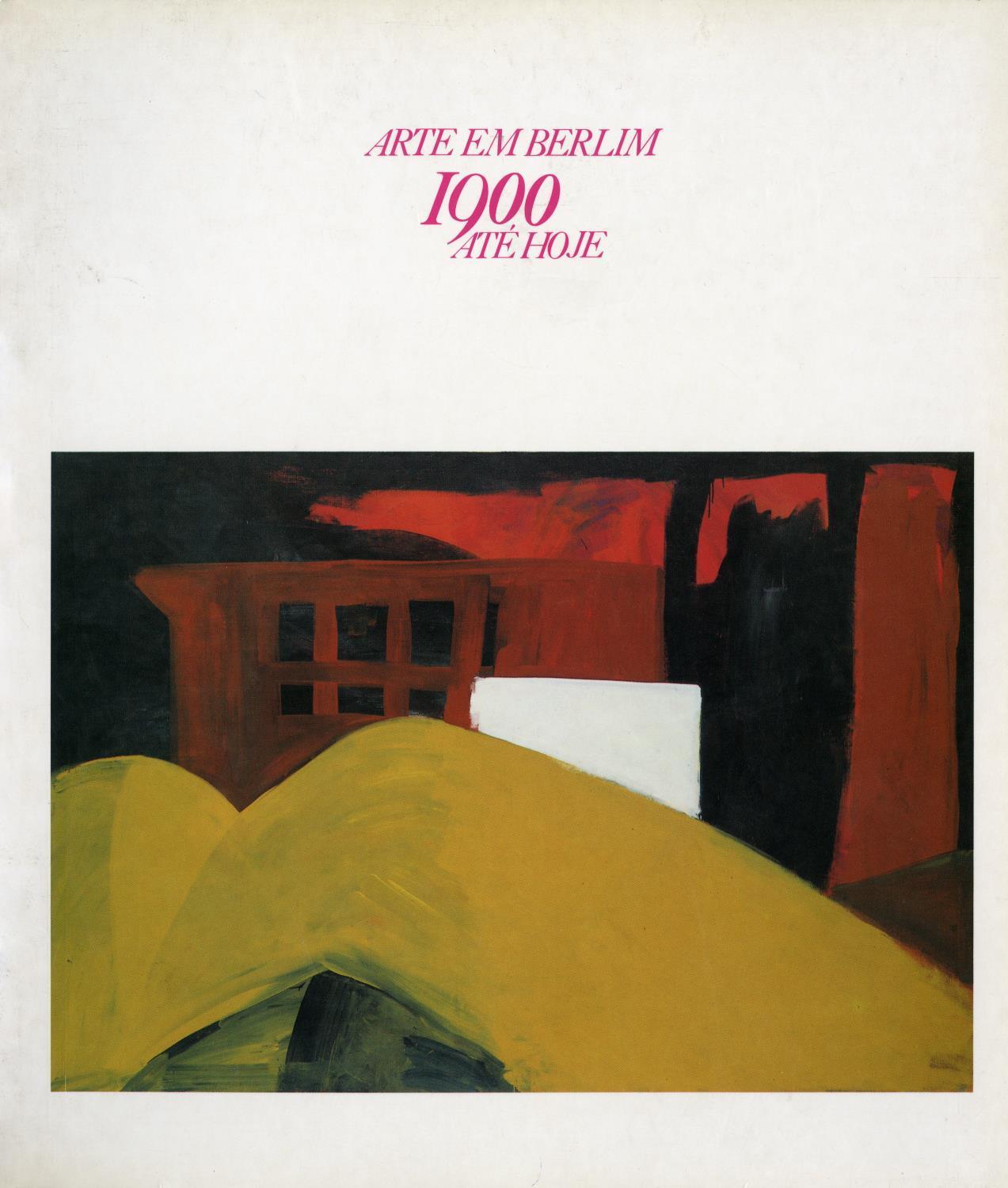
Arte em Berlim. 1900 até Hoje
Exposição organizada pelo Centro de Arte Moderna e a Nationalgalerie, no âmbito do intercâmbio cultural que a Fundação Calouste Gulbenkian manteve com a República Federal da Alemanha. A exposição teve um papel importante na divulgação da arte alemã moderna, pouco conhecida em Portugal.
Exhibition organised by the Modern Art Centre and the Nationalgalerie in Berlin as part of a cultural exchange held between the Calouste Gulbenkian Foundation and the Federal Republic of Germany. The exhibition played a significant role in disseminating German modern art in Portugal, where it had previously not been very well known.
Ficha Técnica
- Iniciativa
- Organizador / Serviço responsável
- Organizador / Parceiro institucional
- Programação
- Coordenação geral
- Comissariado
- Comissário-adjunto
- Conservação e restauro
Artistas / Participantes
- Alexander Camaro (1901 – 1992)
- Bernd Koberling (1938)
- Bernhard Heiliger (1915 – 1995)
- Brigitte Matschinsky-Denninghoff (1923 – 2011)
- Dieter Appelt (1935)
- Edward Kienholz (1927 – 1994)
- Ernst Ludwig Kirchner (1880 – 1938)
- Ernst Wilhelm Nay (1902 – 1968)
- Frank Badur (1944)
- Fred Thieler (1916 – 1999)
- Fritz Rahmann (1936 – 2006)
- Georg Baselitz (1938)
- George Grosz (1893 – 1959)
- Hann Trier (1915 – 1999)
- Hannah Höch (1889 – 1978)
- Hans Uhlmann (1900 – 1975)
- Heinz Trökes (1913 – 1997)
- Helmut Middendorf (1953)
- Hermann Blumenthal (1905 – 1942)
- Joachim Karsch (1897 – 1945)
- Joachim Schmettau (1937)
- Joahannes Grützke (1937 – 2017)
- Johannes Geccelli (1925 – 2011)
- Karl Hofer (1878 – 1955)
- Karl Horst Hödicke (1938)
- Karl Schmidt-Rottluff (1884 – 1976)
- Käthe Kollwitz (1867 – 1945)
- Klaus Vogelgesang (1945)
- Lovis Corinth (1858 – 1925)
- Luciano Castelli (1951)
- Markus Lüpertz (1941)
- Martin Matschinsky (1921 – 2011)
- Martin Rosz (1945)
- Max Beckmann (1884 – 1950)
- Max Liebermann (1847 – 1935)
- Max Liebermann (1847 – 1935)
- Michael Schoenholtz (1937)
- Nancy Reddin Kienholz (1943)
- Peter Sorge (1937 – 2000)
- Raffael Rheinsberg (1943 – 2016)
- Rainer Fetting (1949)
- Rainer Kriester (1935 – 2002)
- Rainer Mang (1943 – 2007)
- Raoul Hausmann (1886 – 1971)
- Rolf Szymanski (1928 – 2003)
- Salomé (1954)
- Susanne Mahlmeister (1952 – 2000)
- Walter Stöhrer (1937 – 2000)
- Werner Gilles (1894 – 1961)
- Werner Heldt (1904 – 1954)
- Wolf Vostell (1932 – 1998)
- Wolfgang Petrick (1939)
Publicações
Material Gráfico
Fotografias
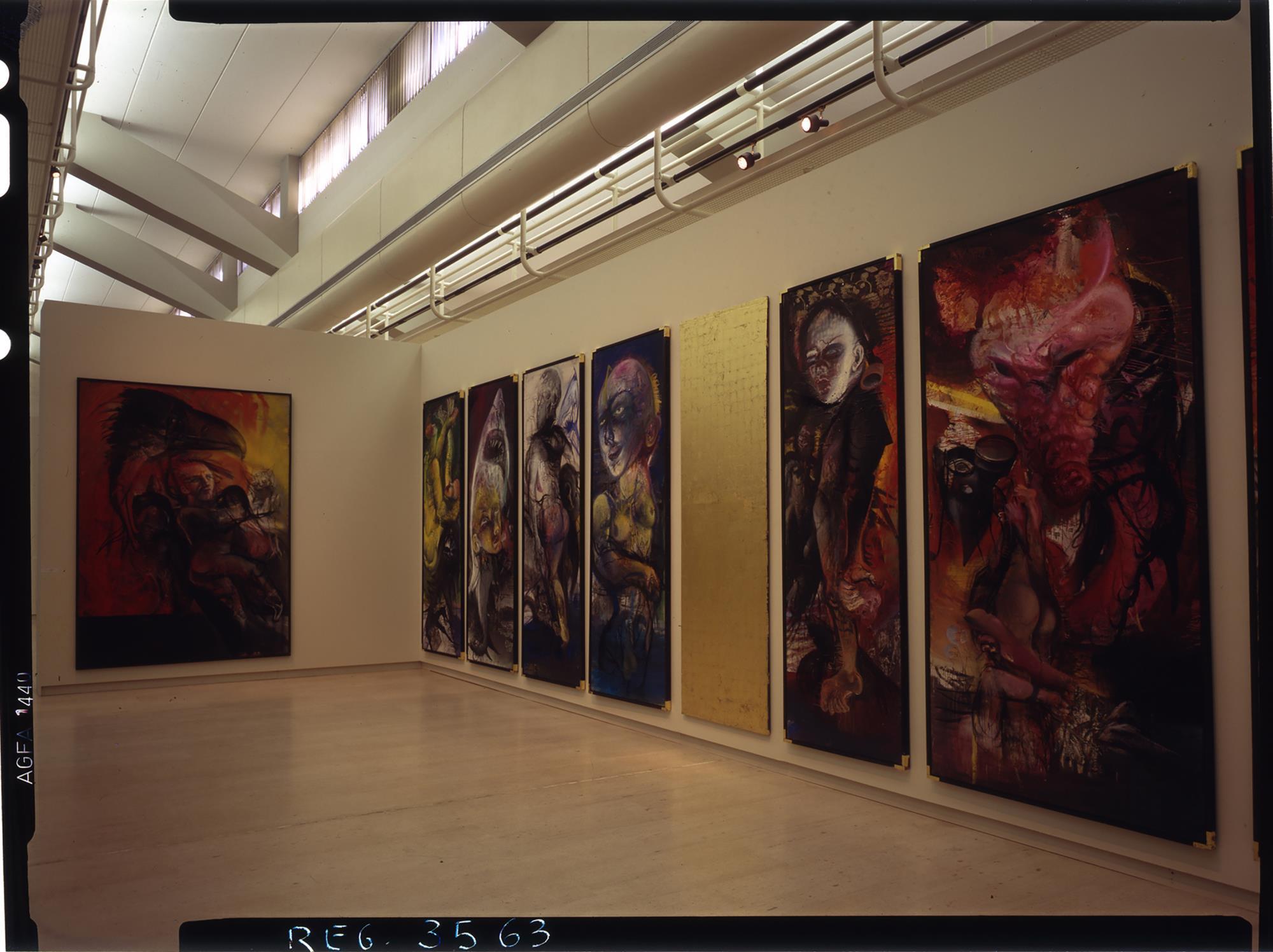
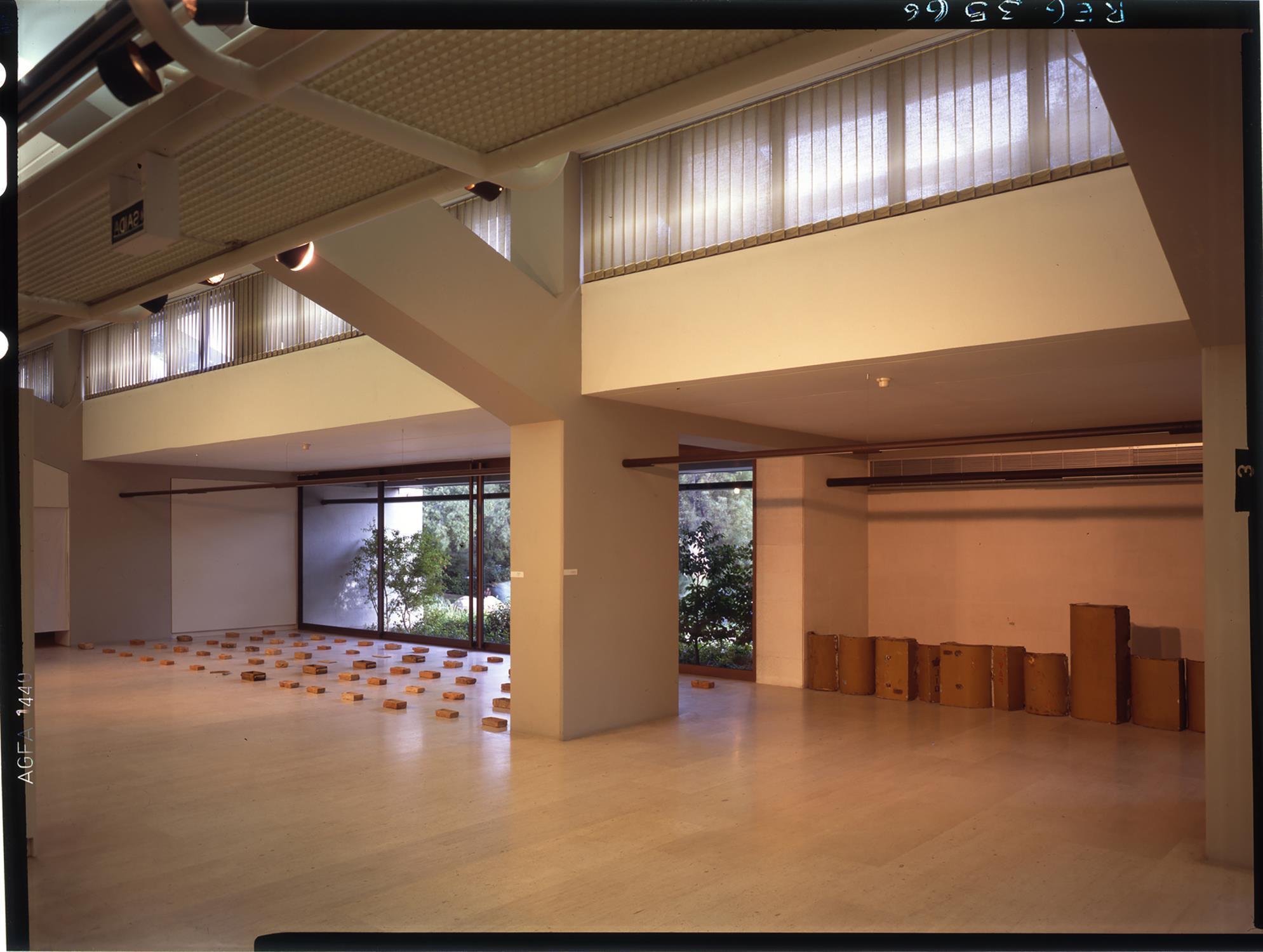
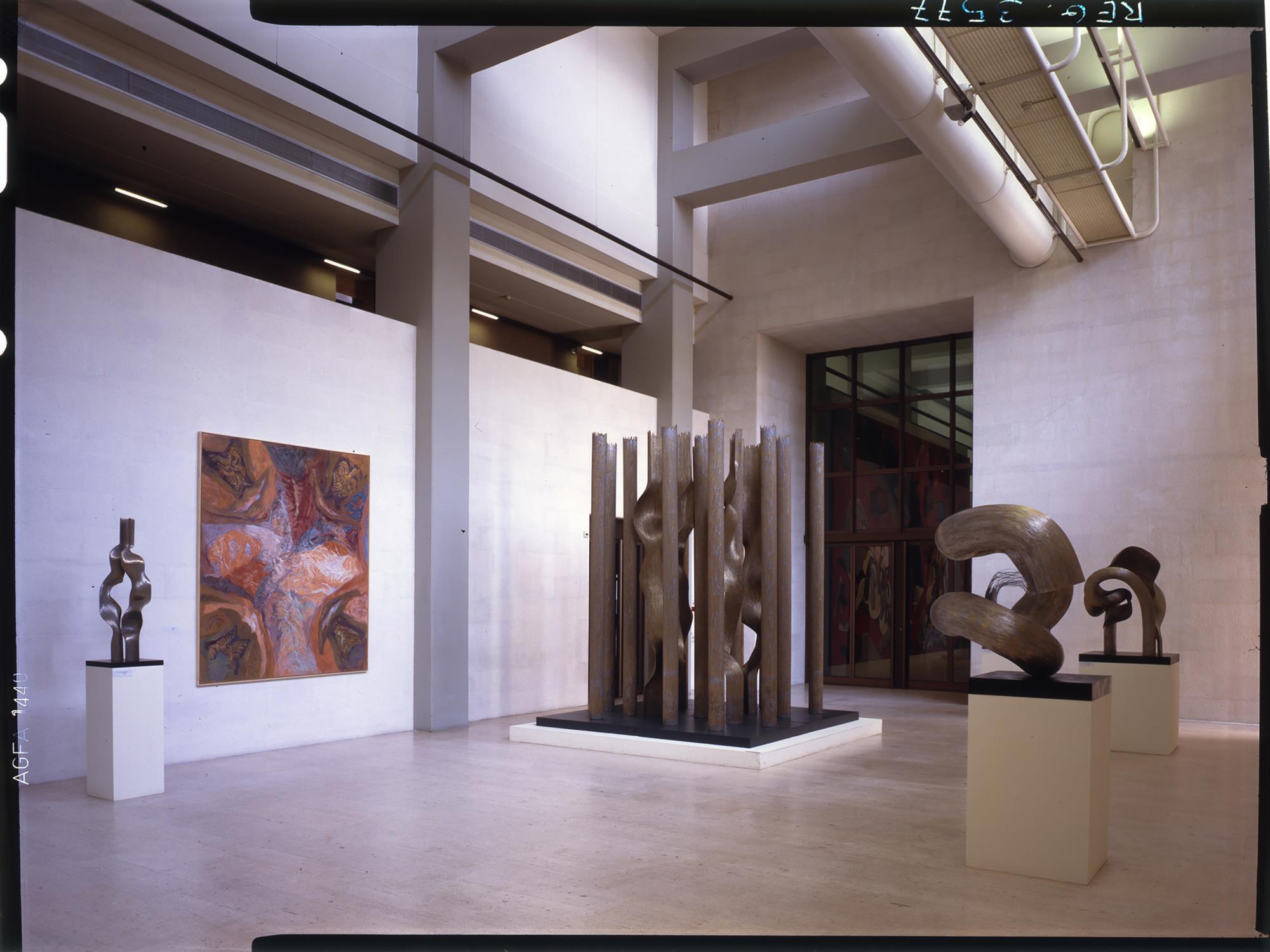
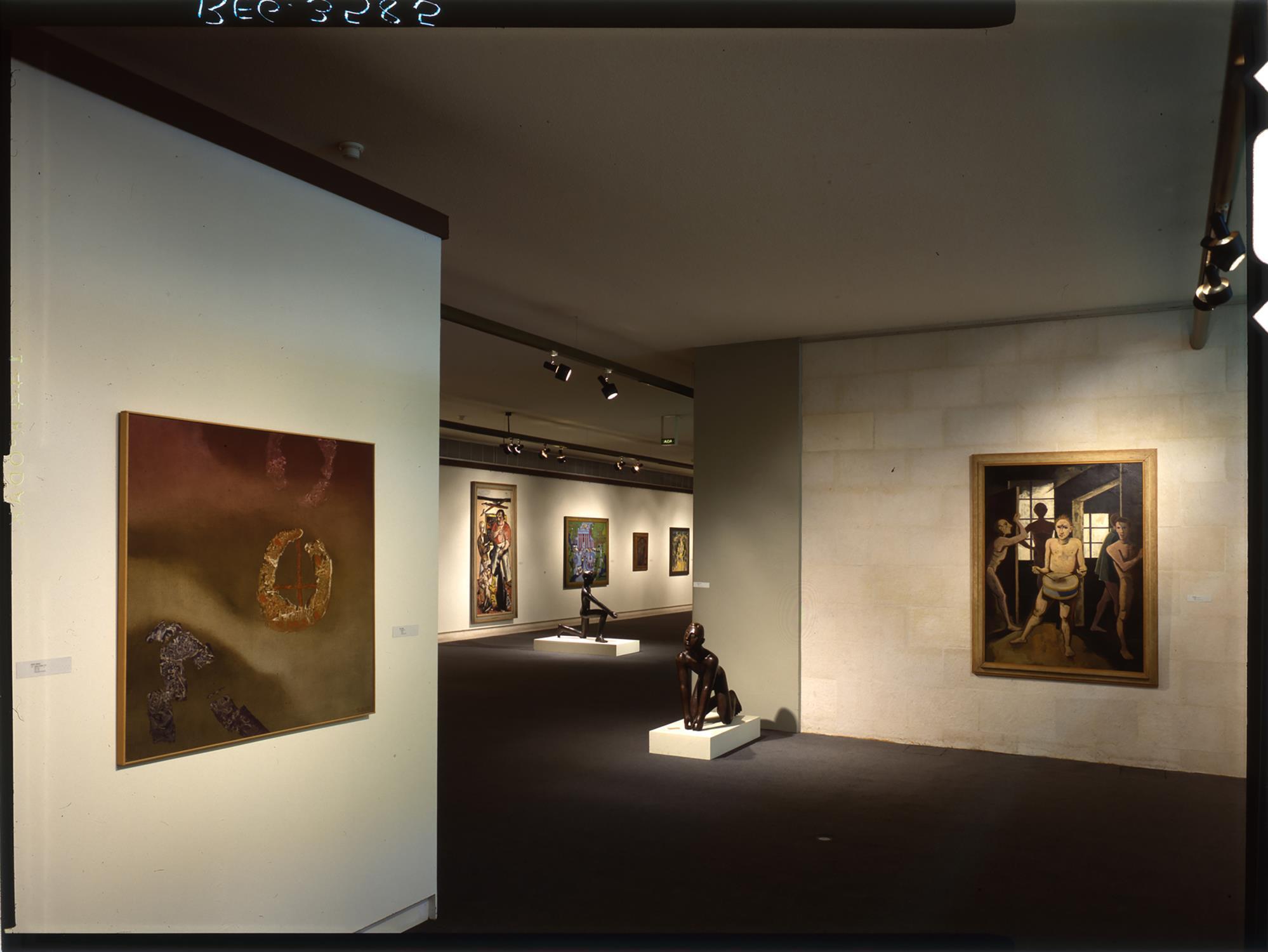
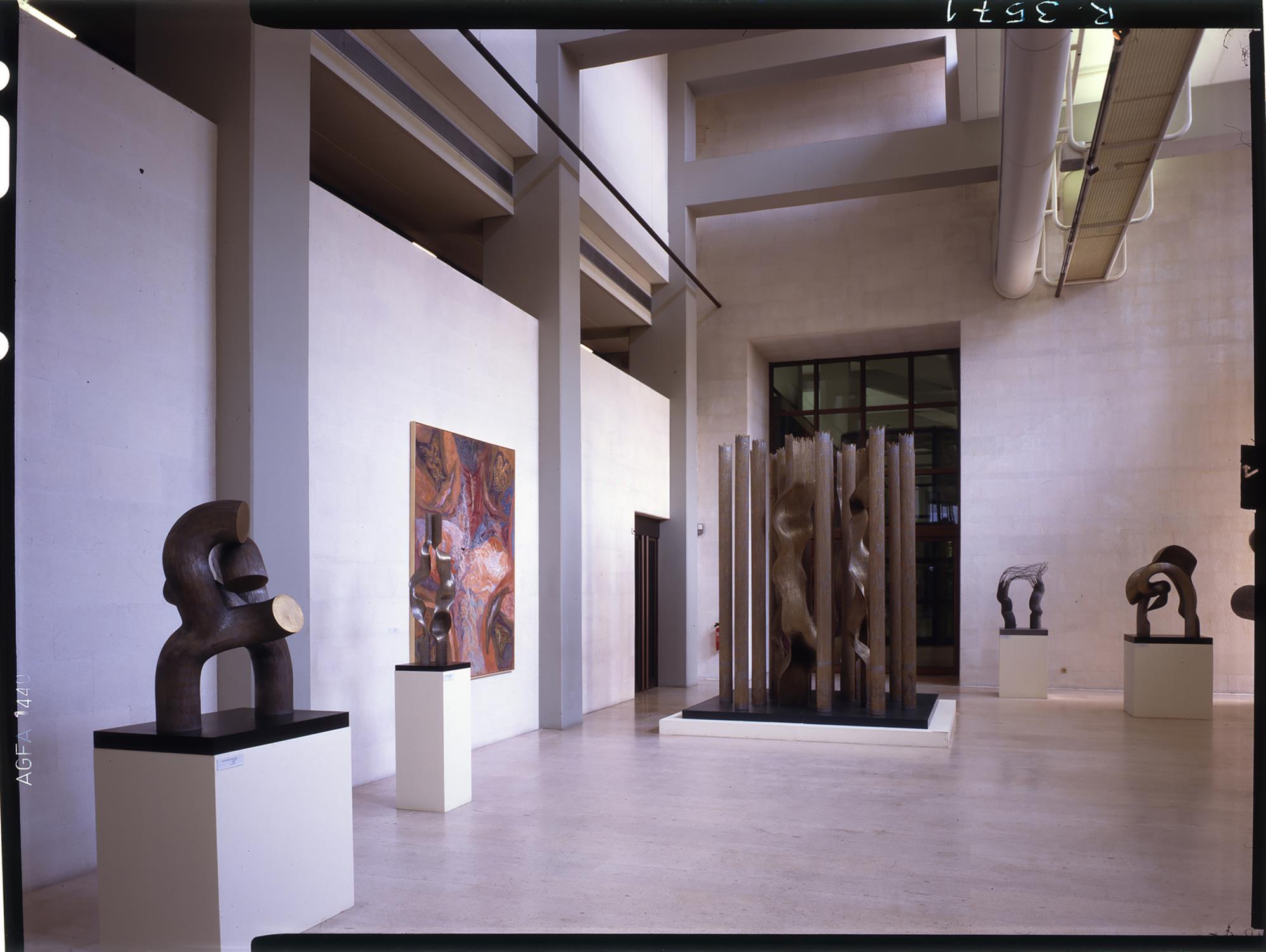
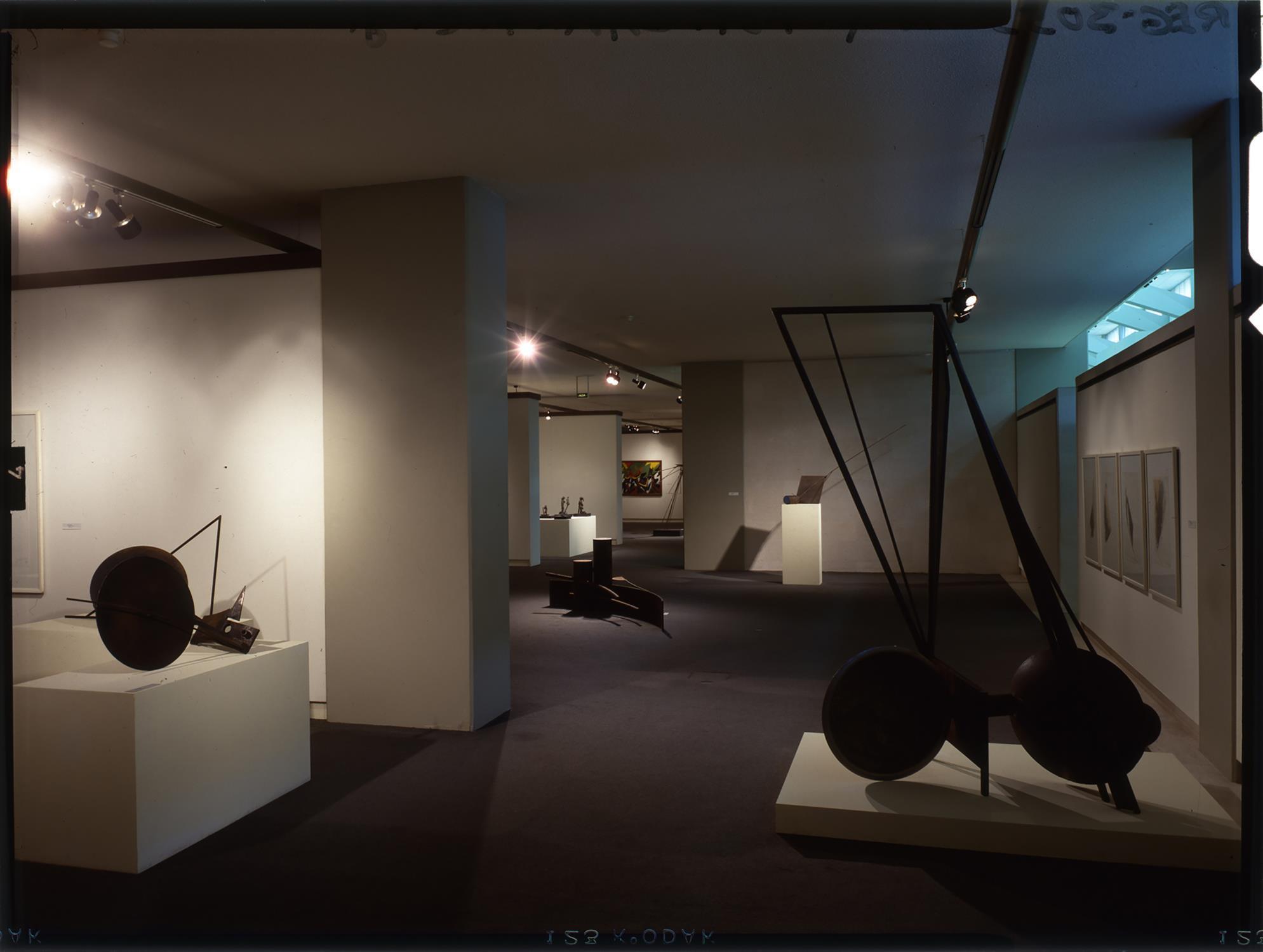

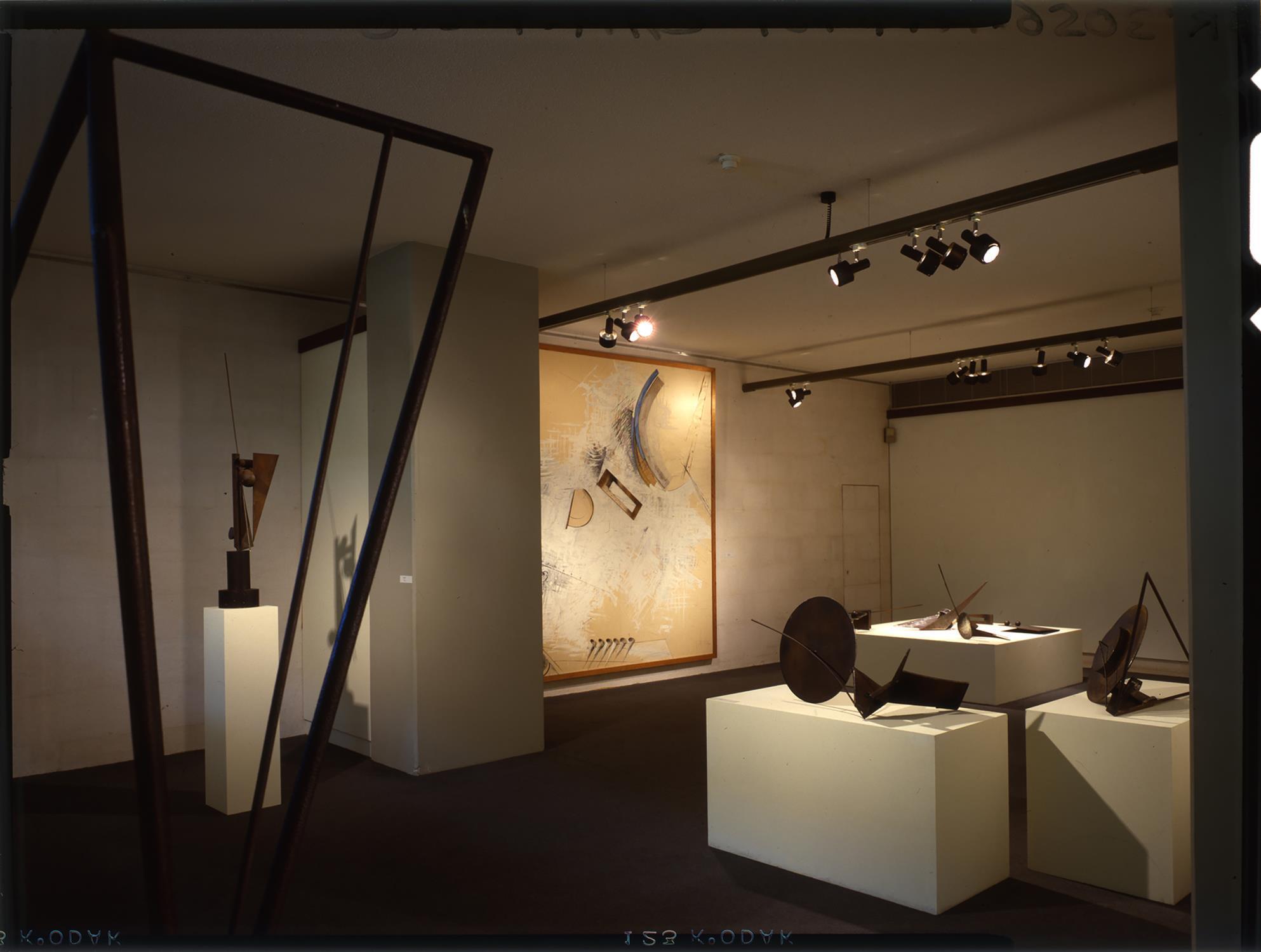
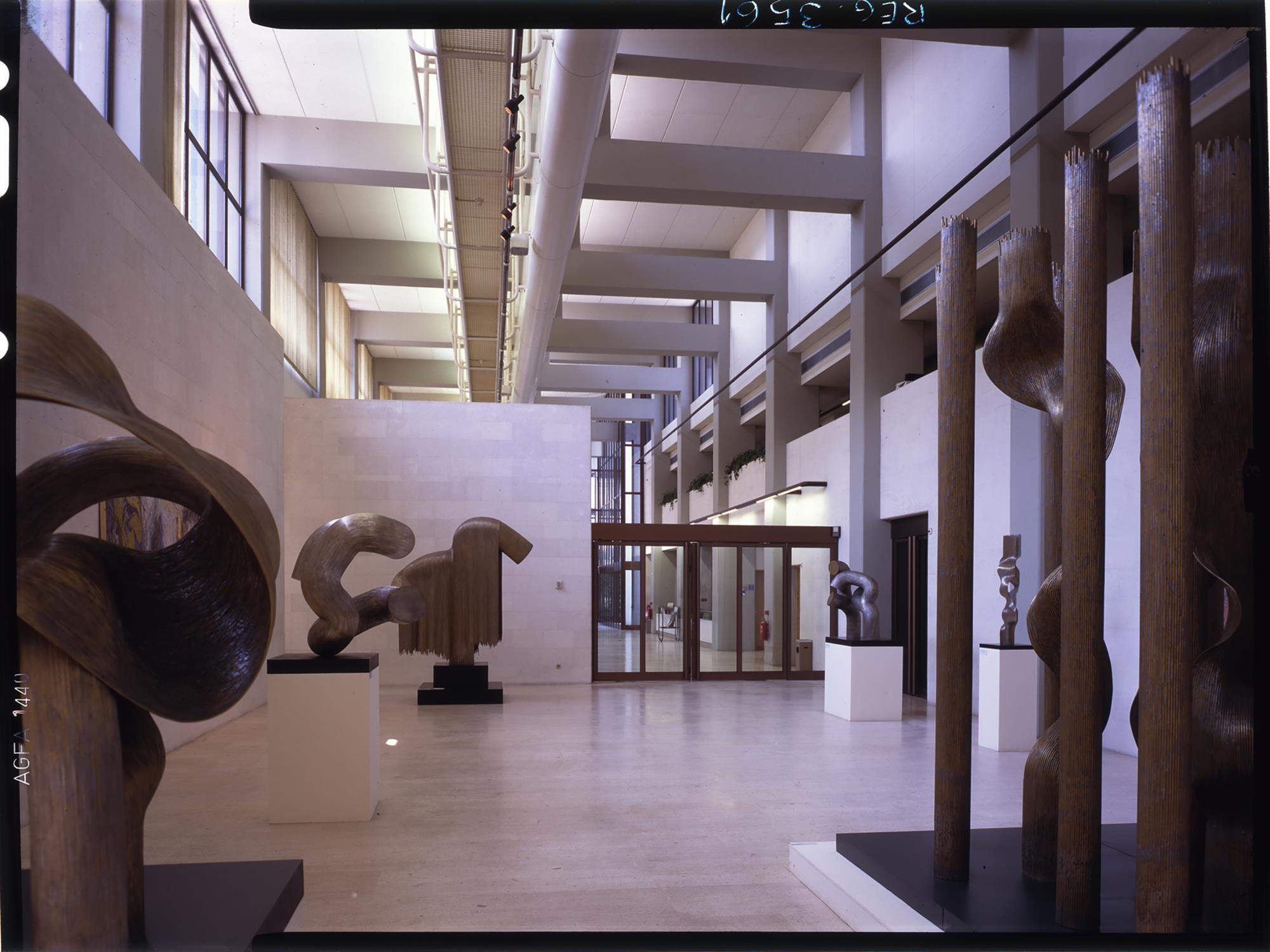
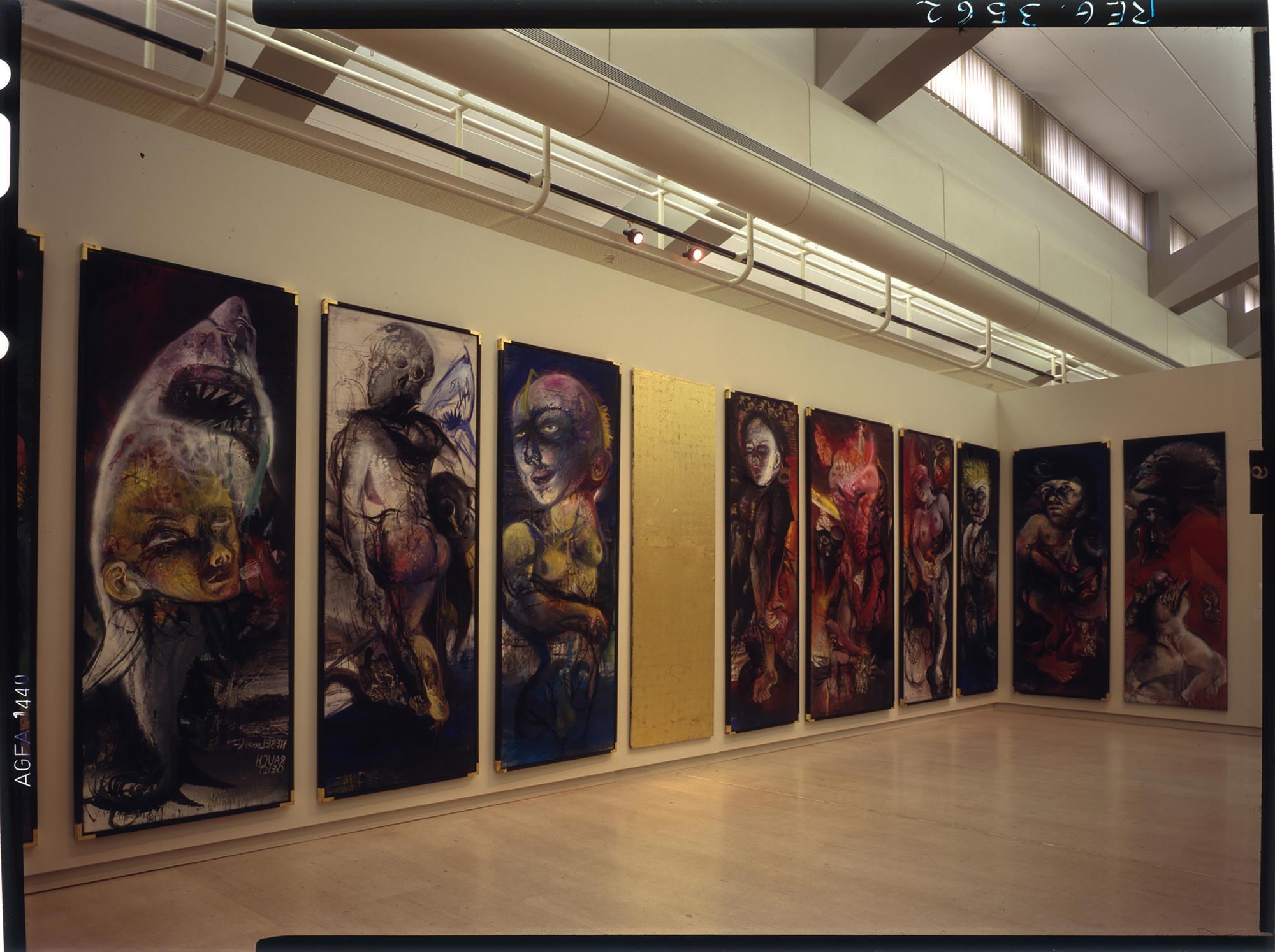
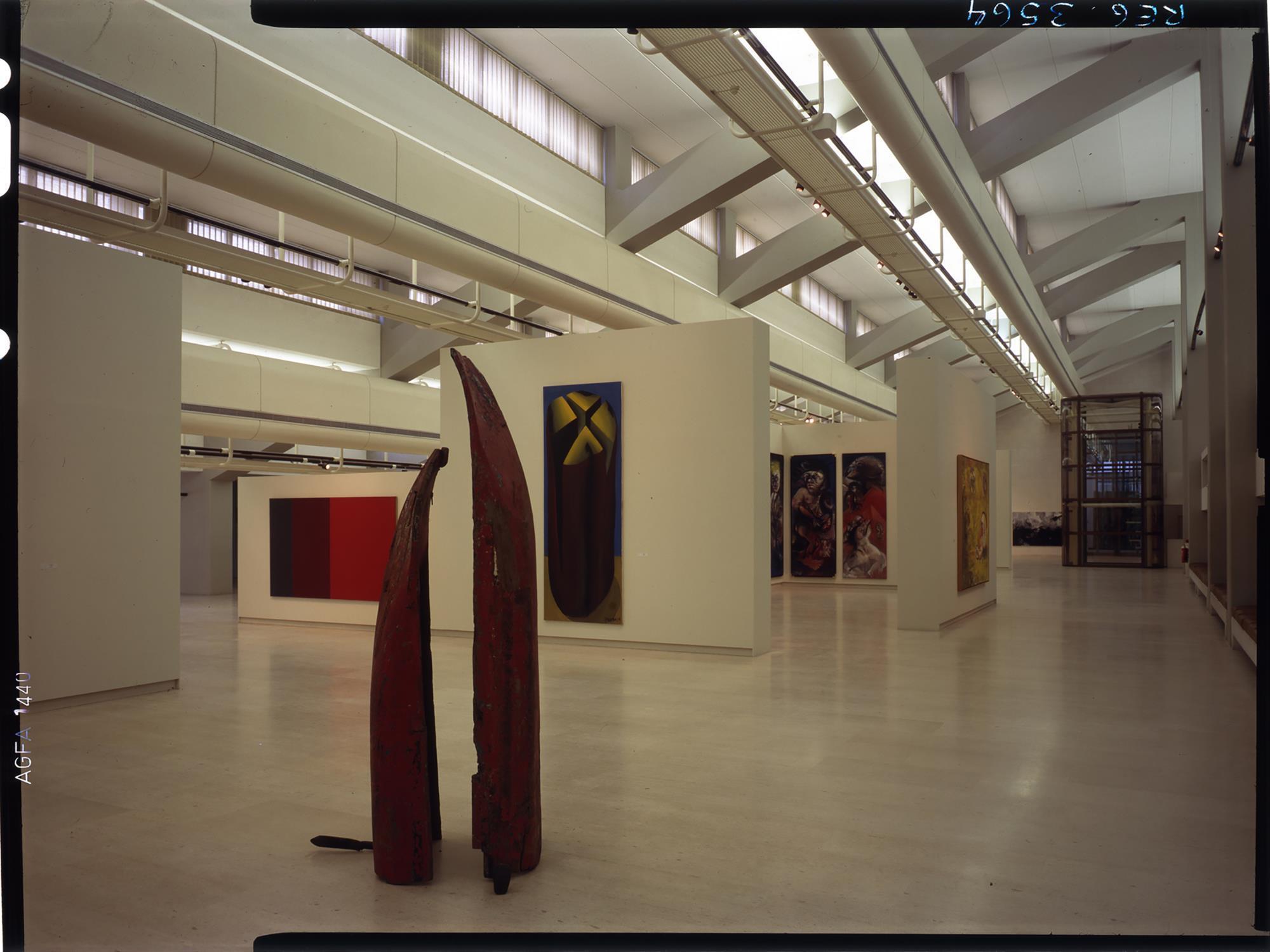
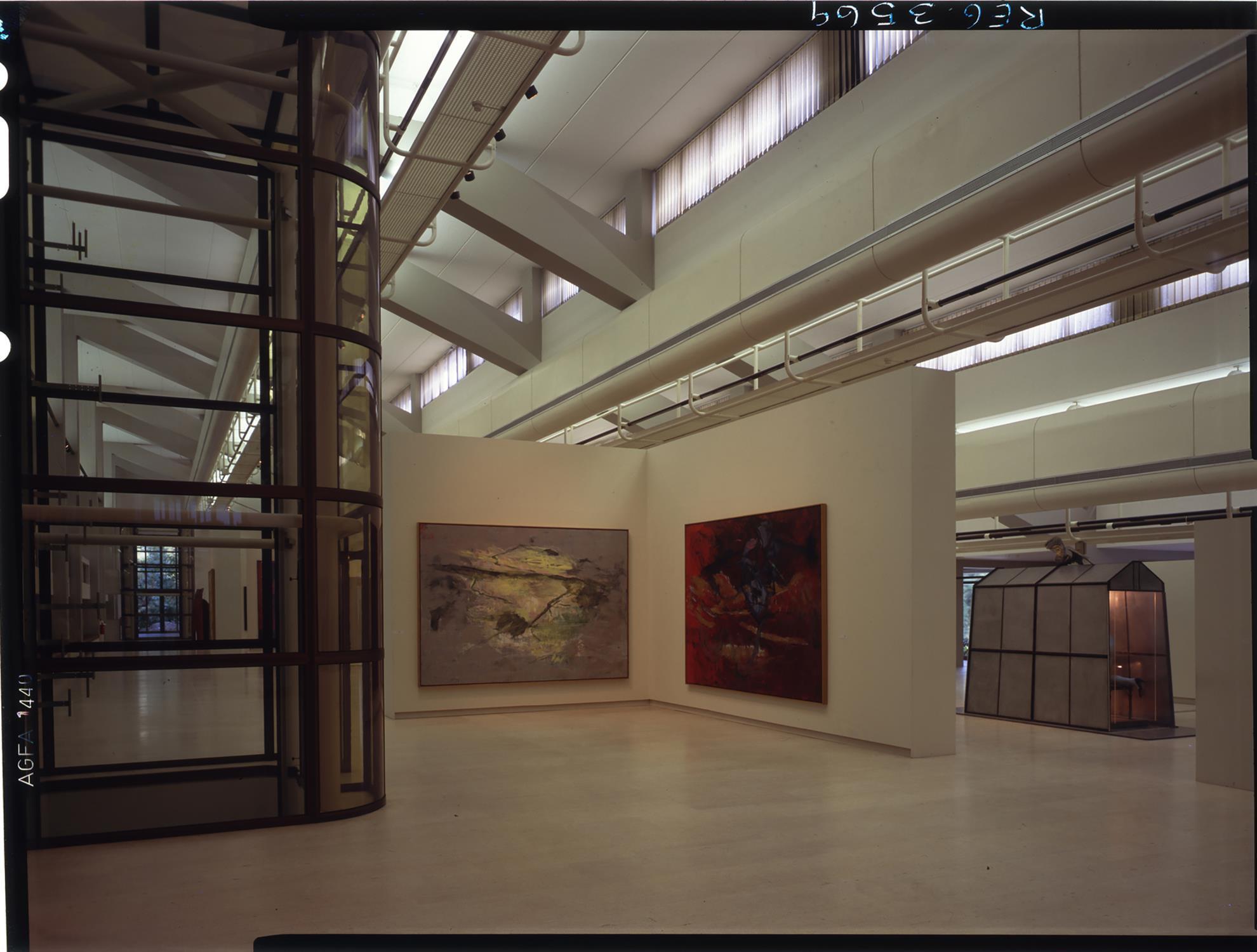

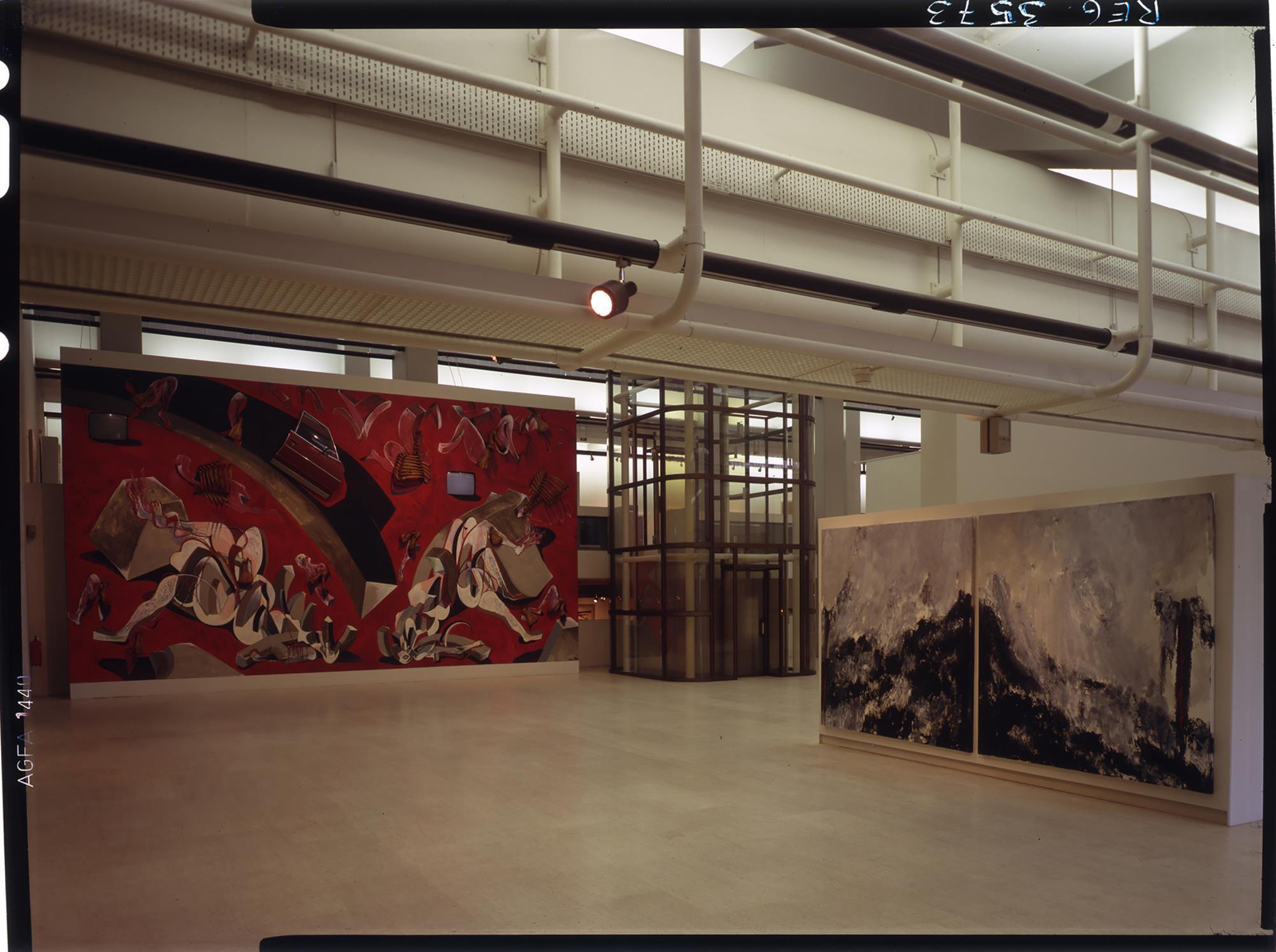

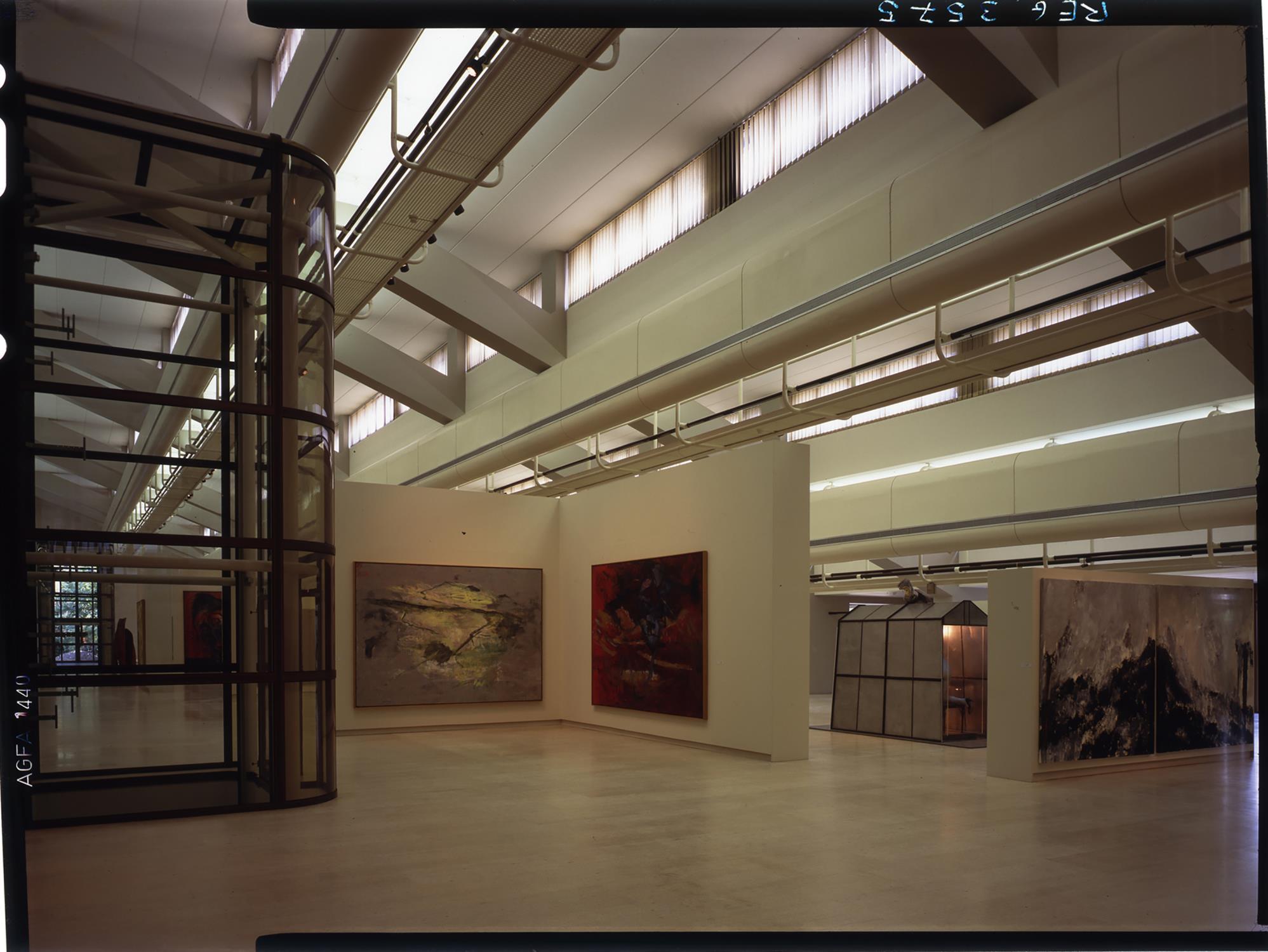
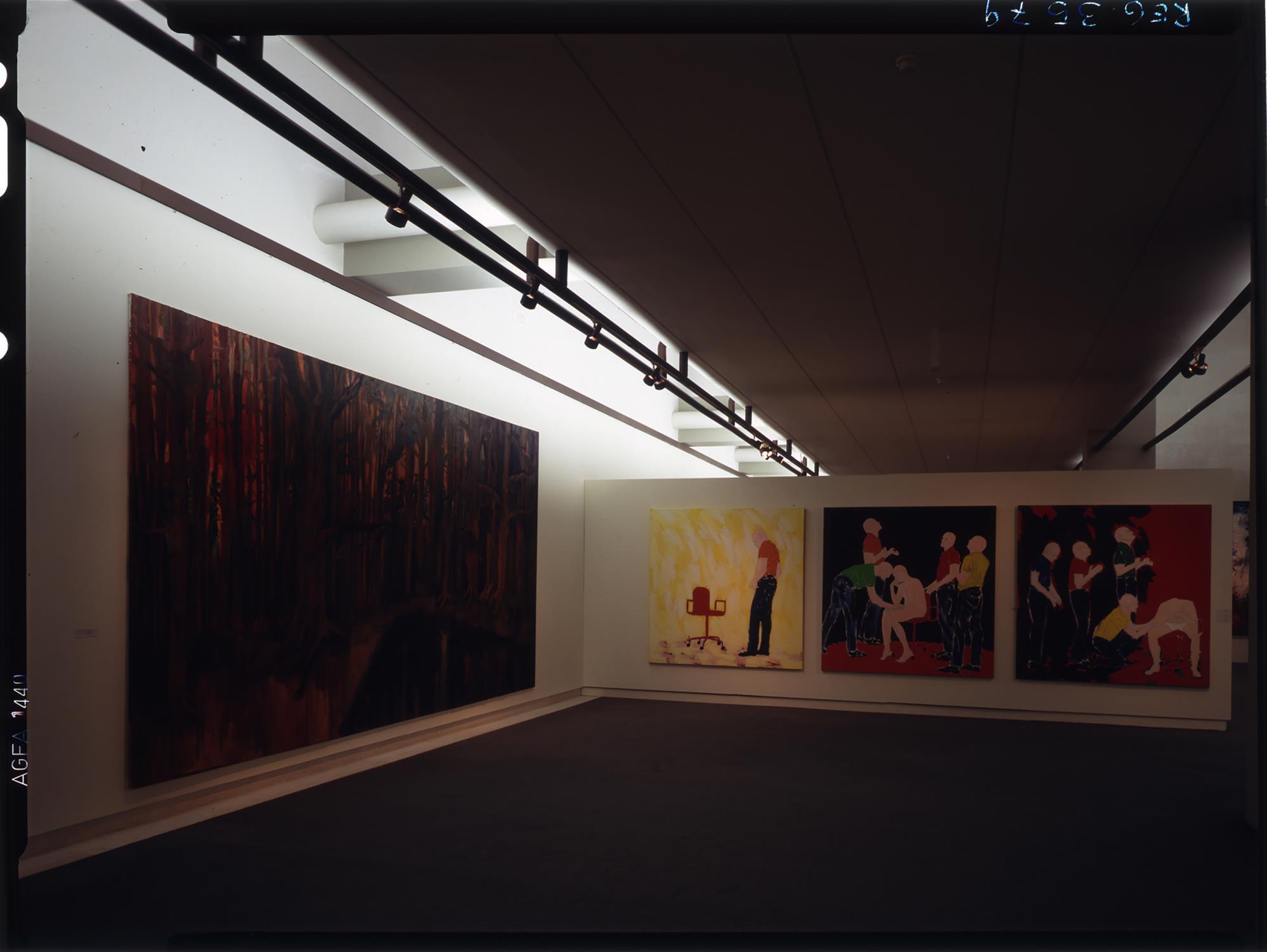
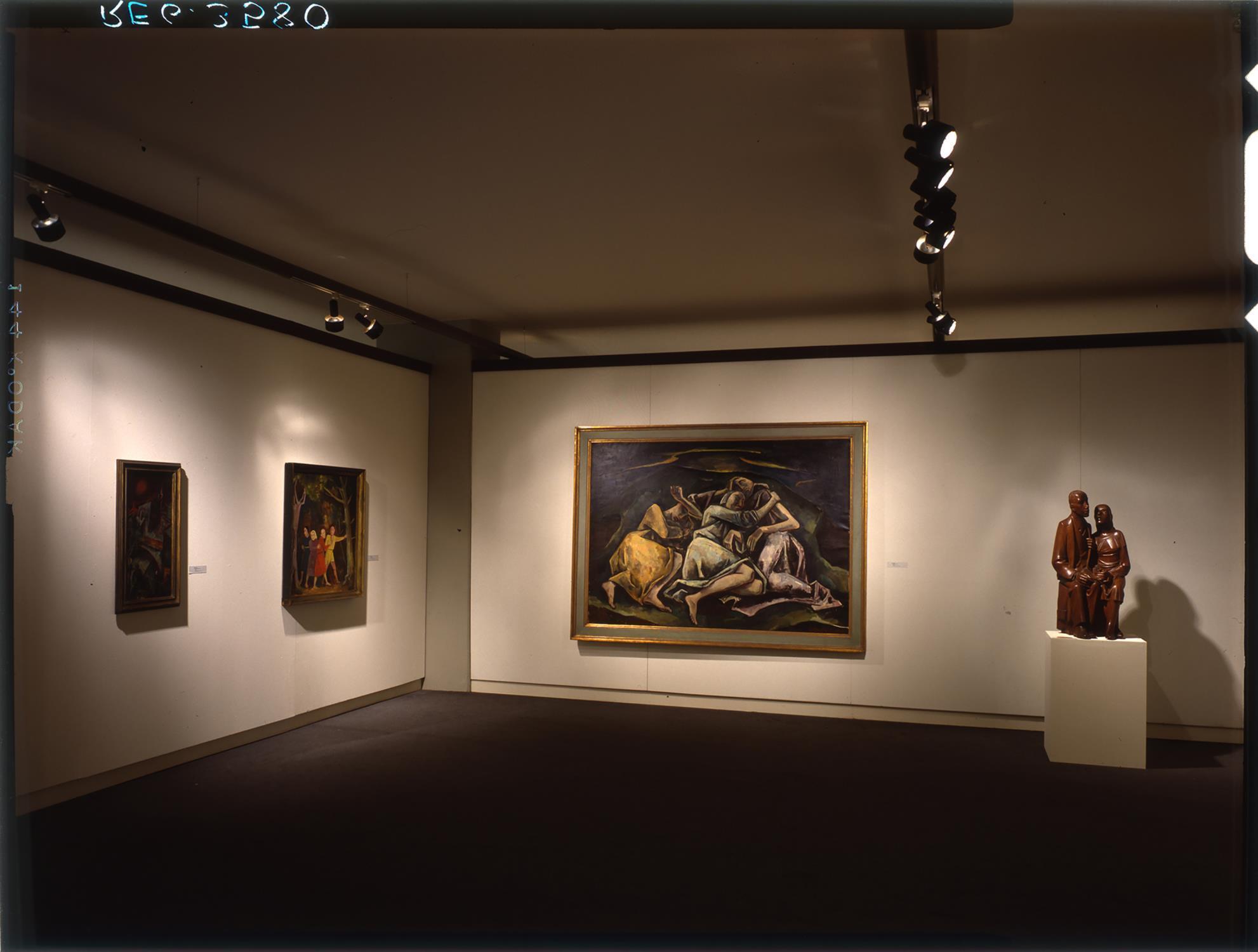
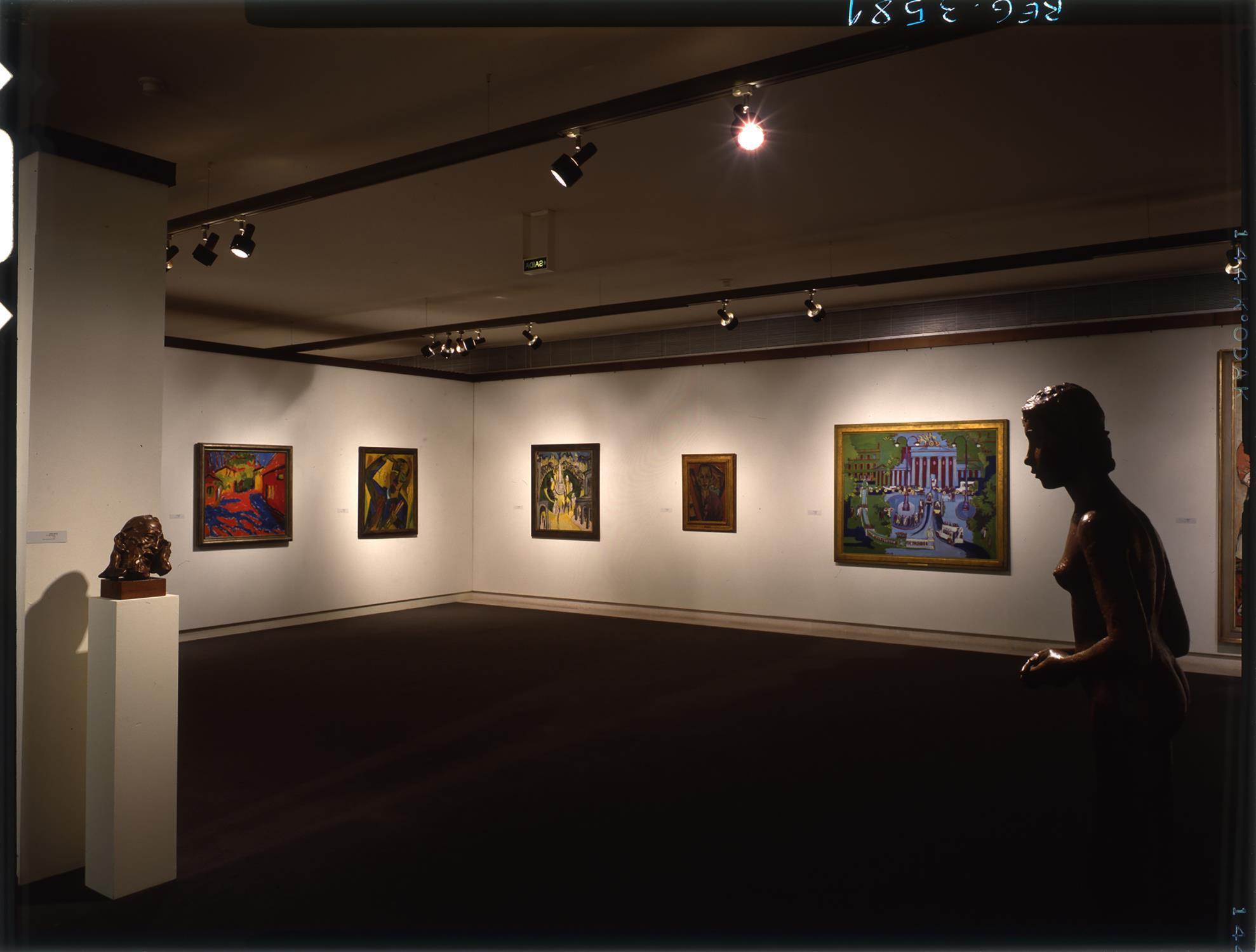


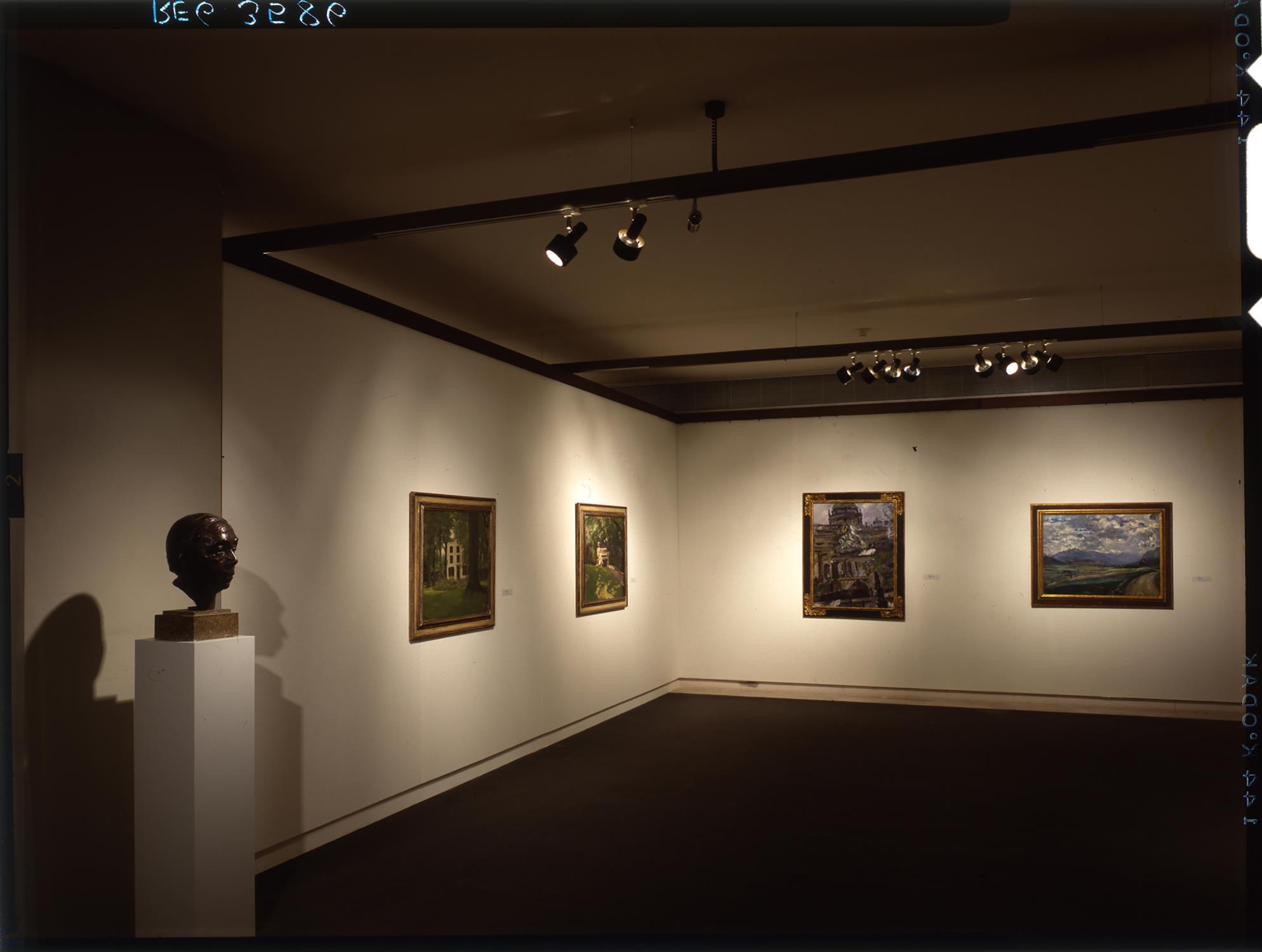
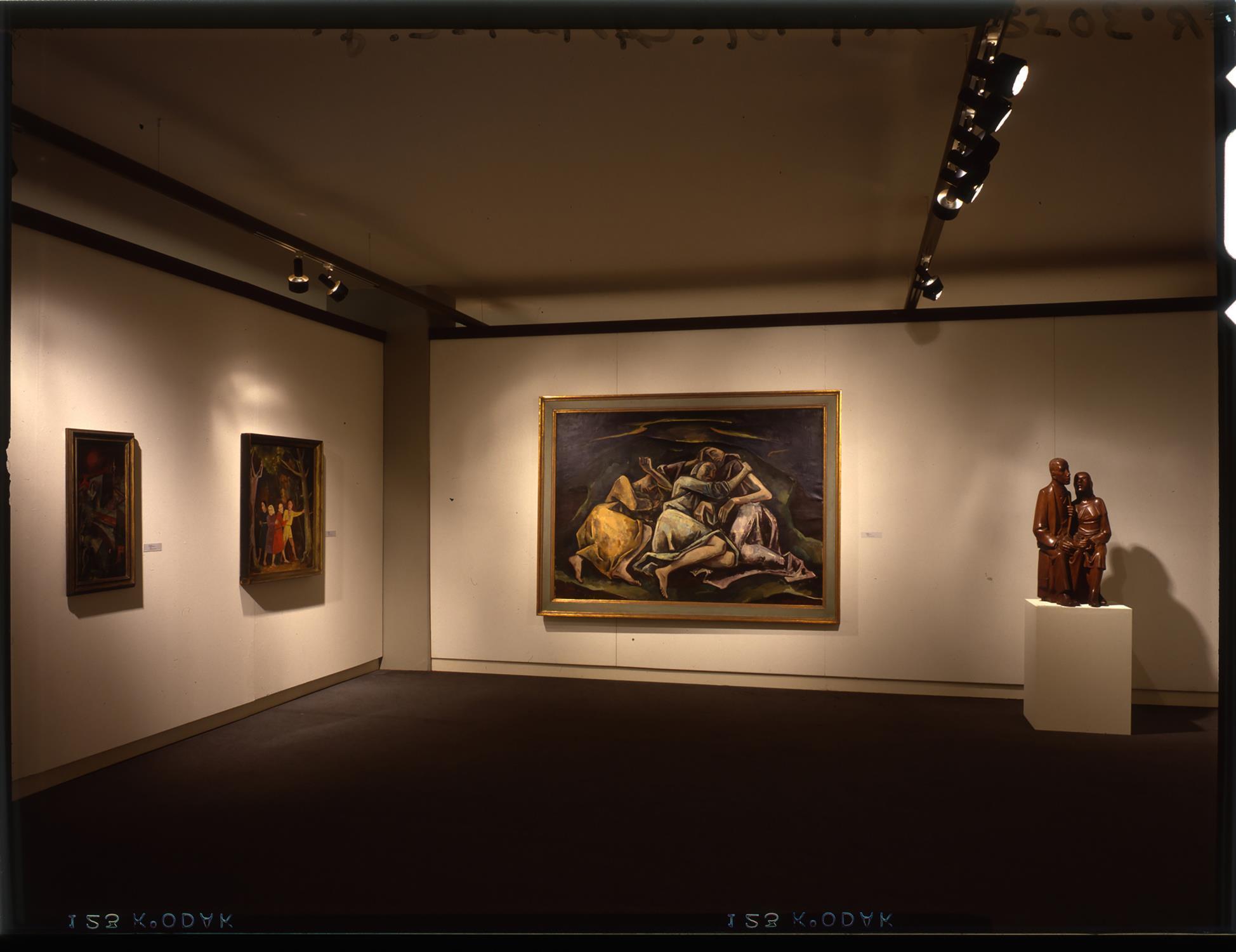
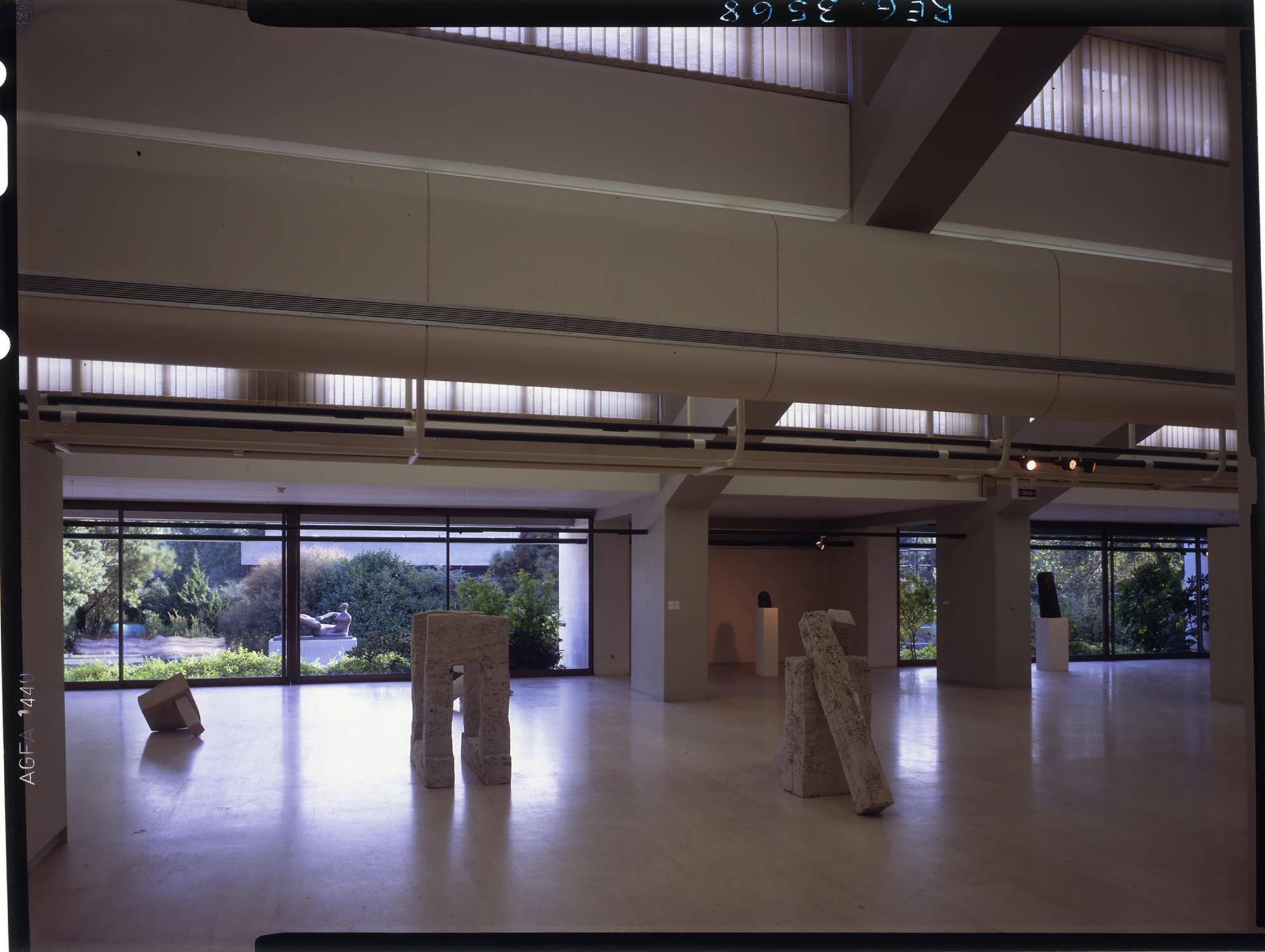

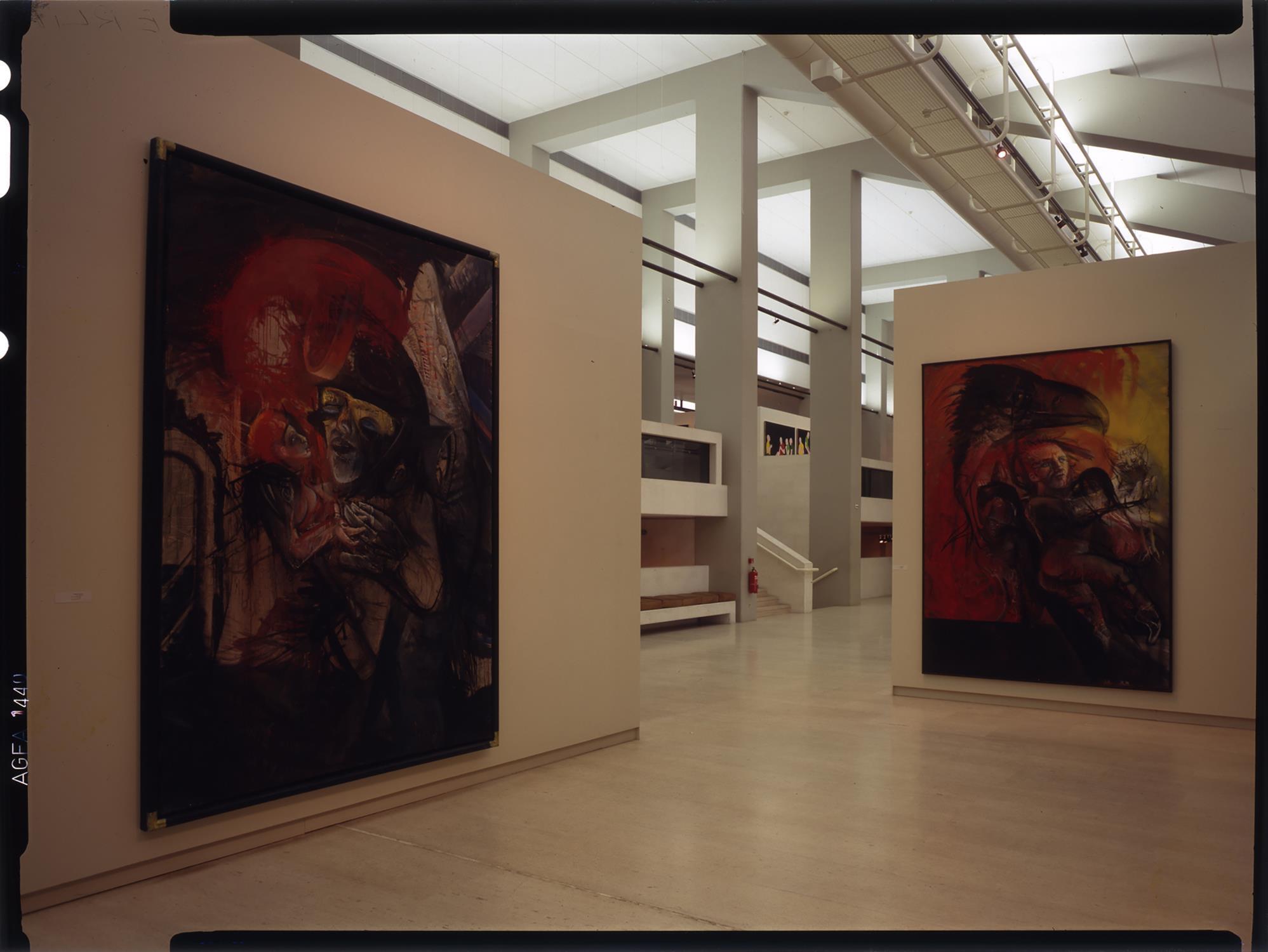
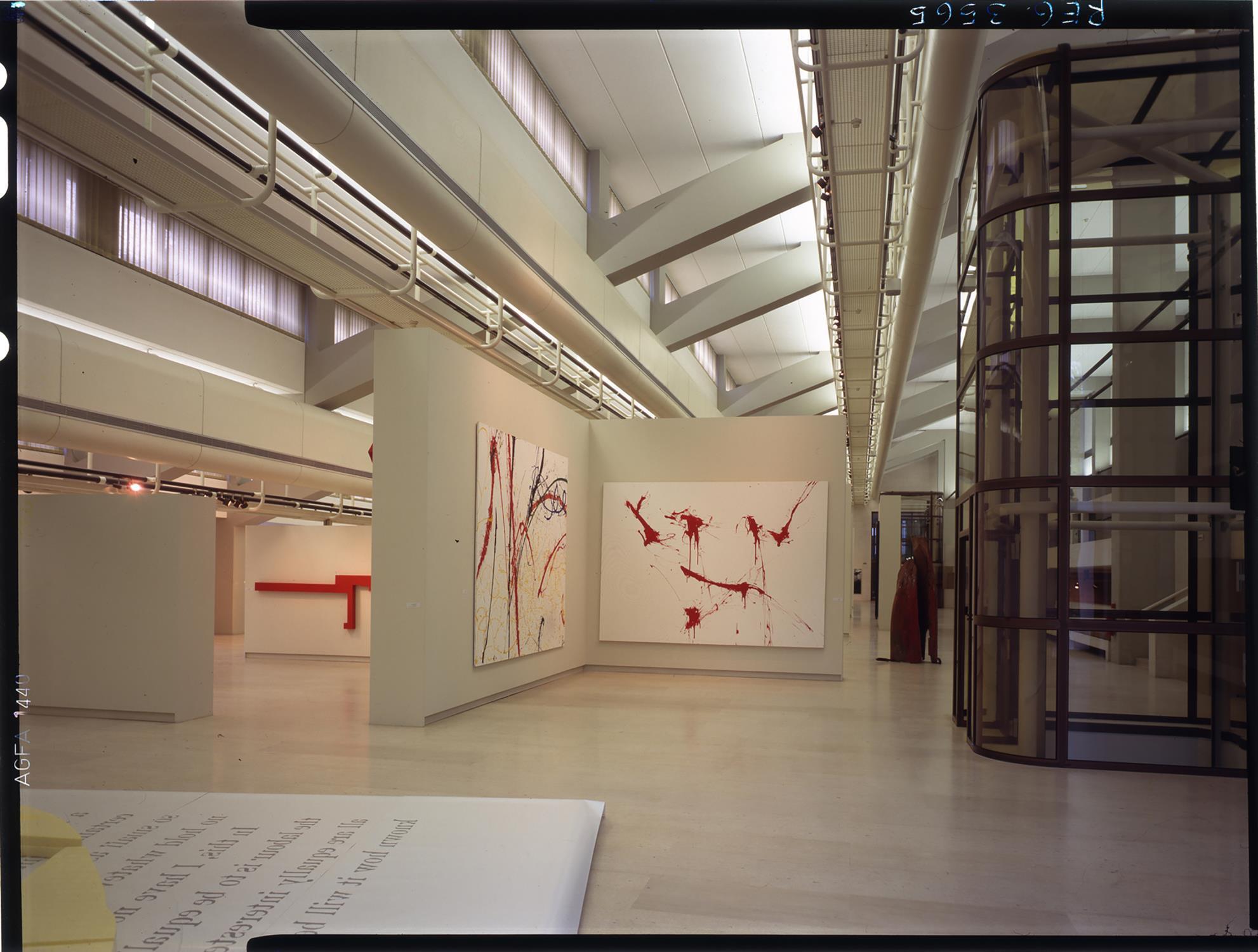
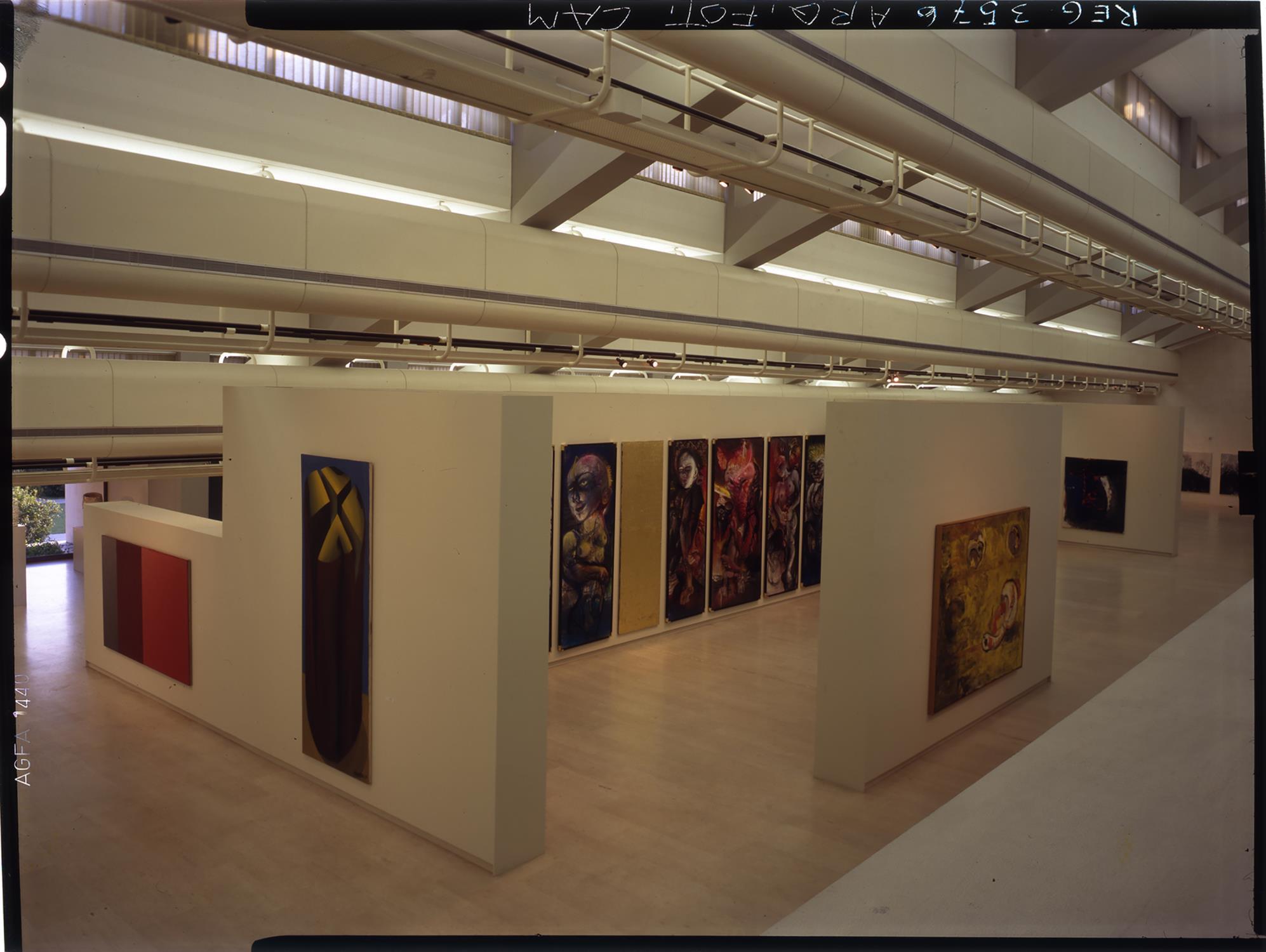
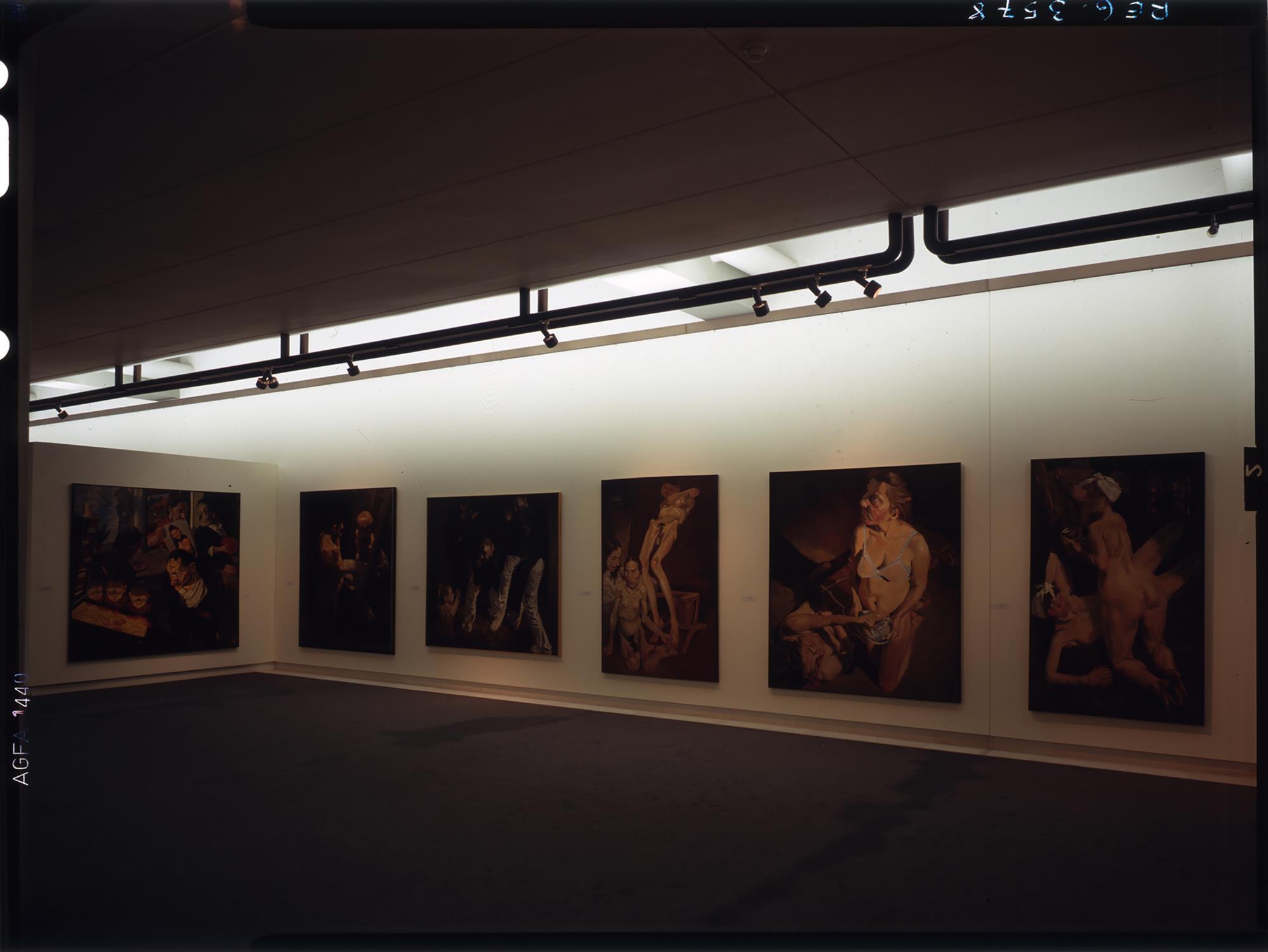

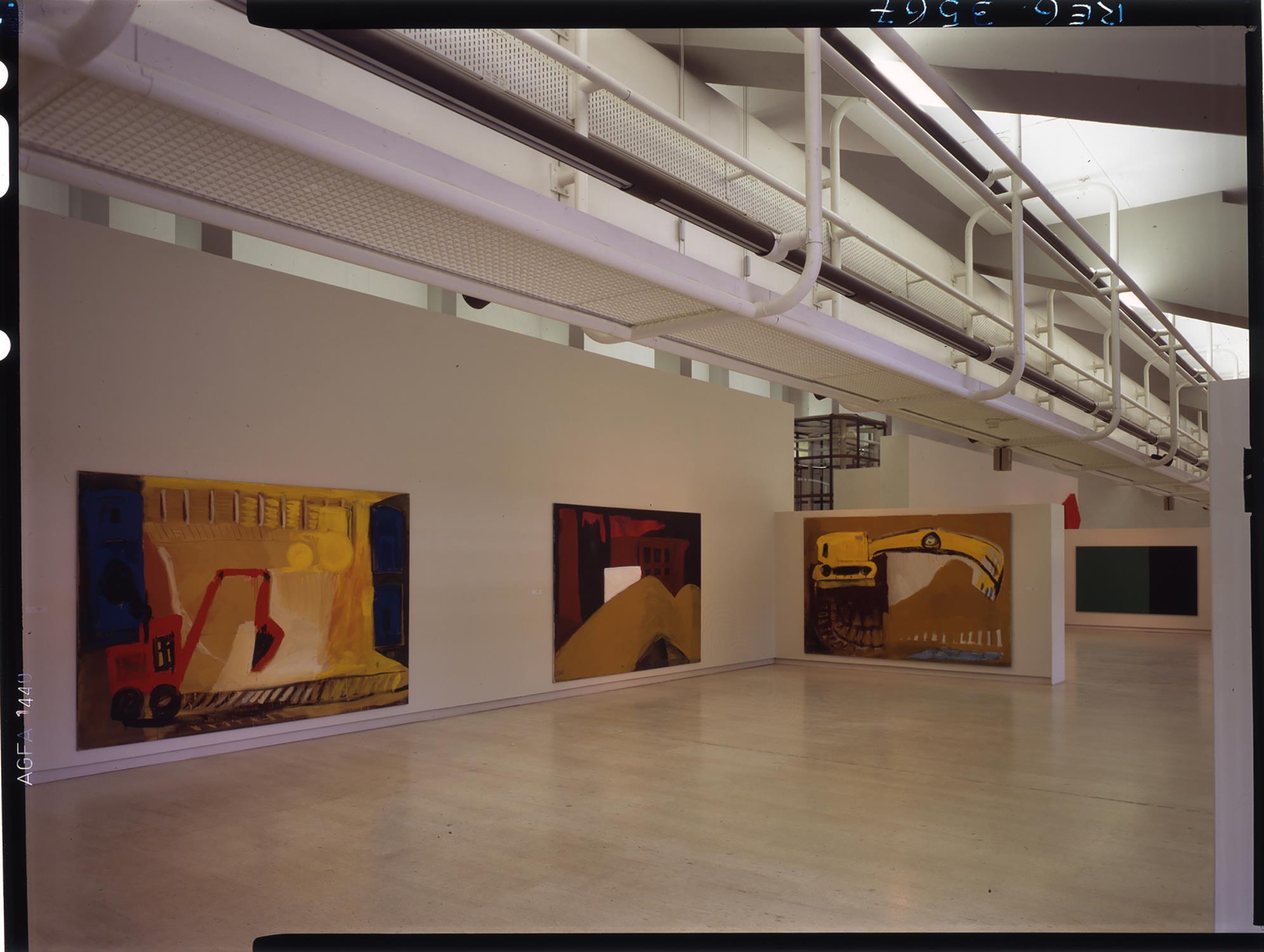

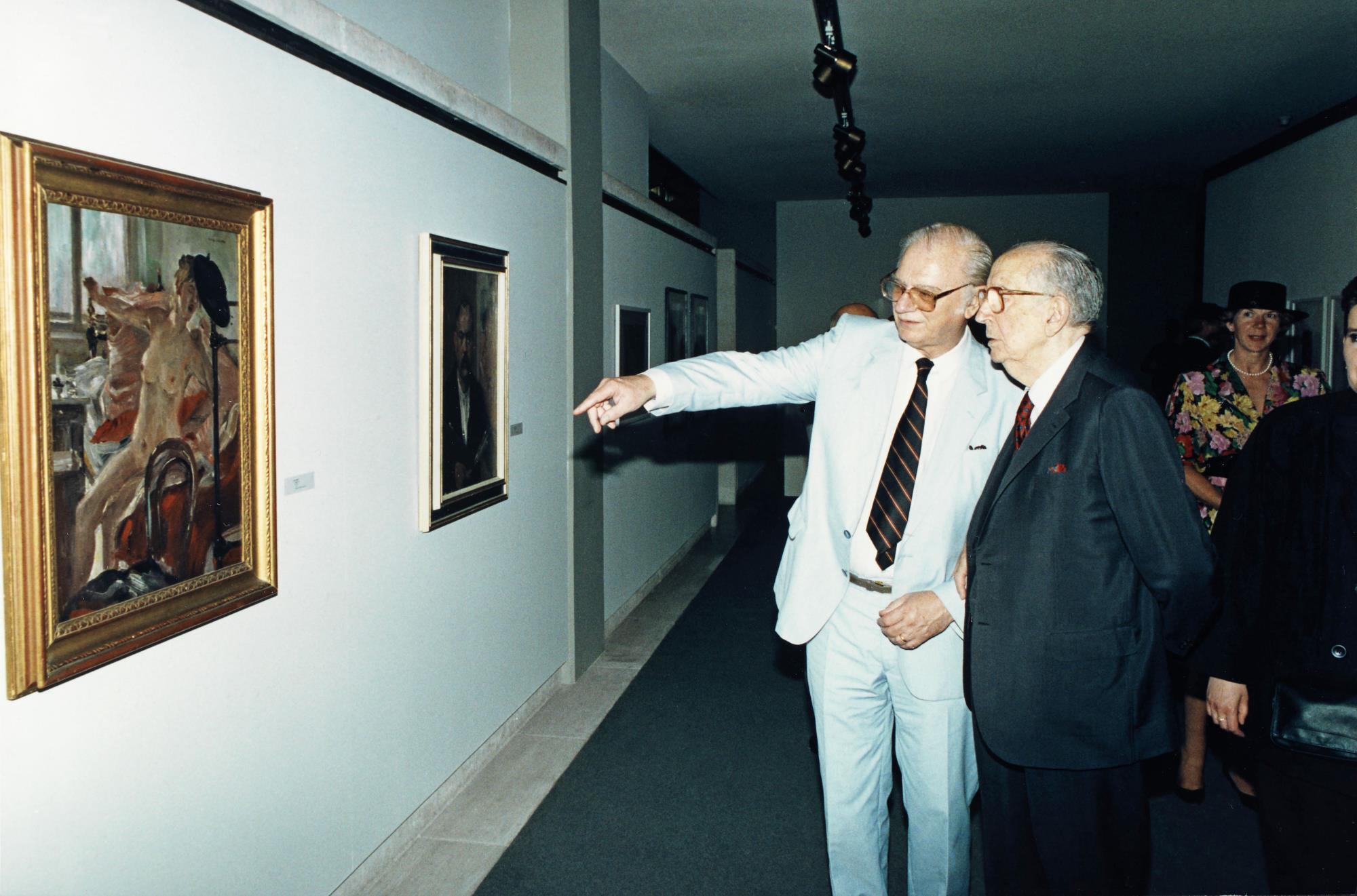
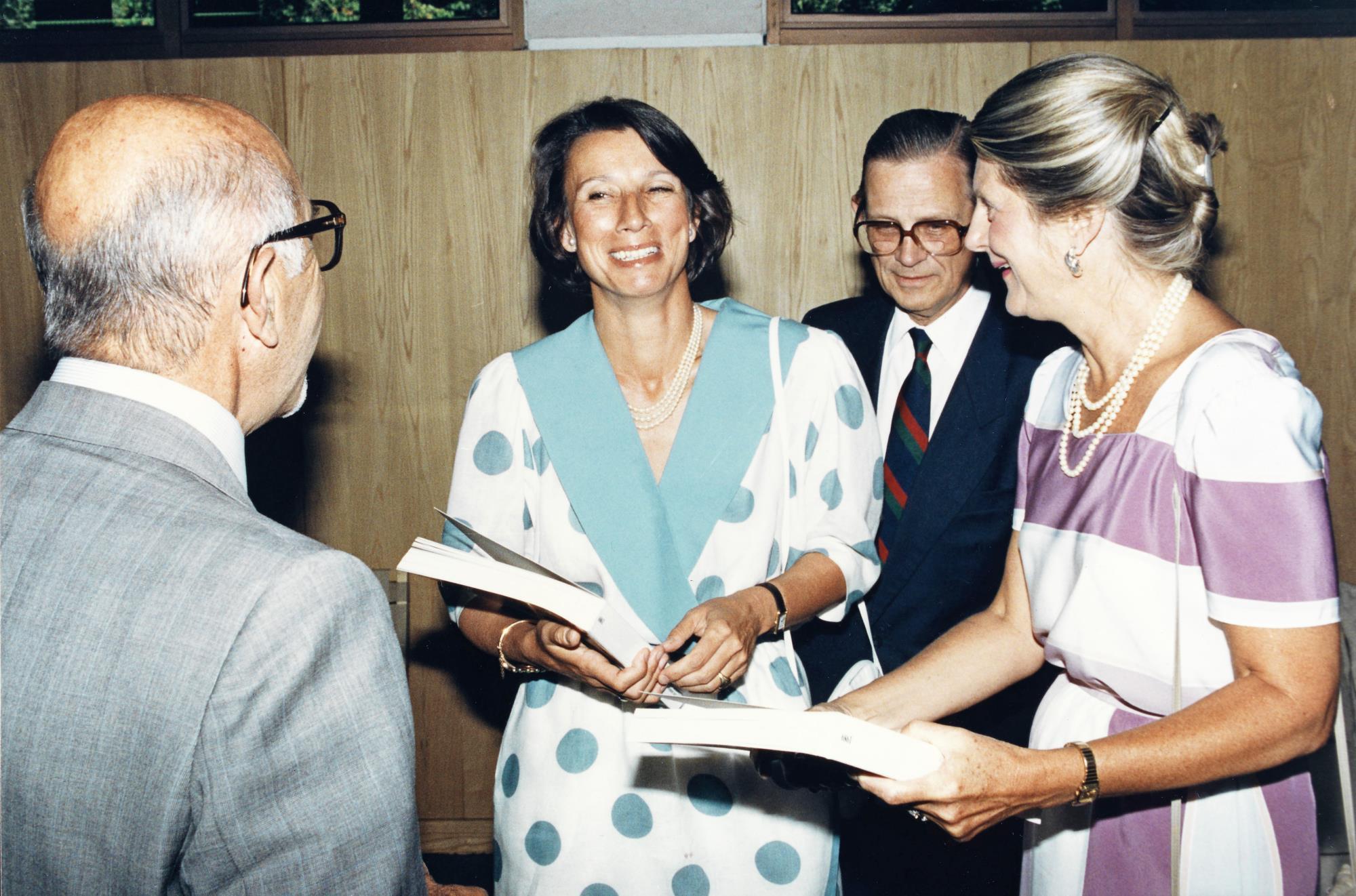

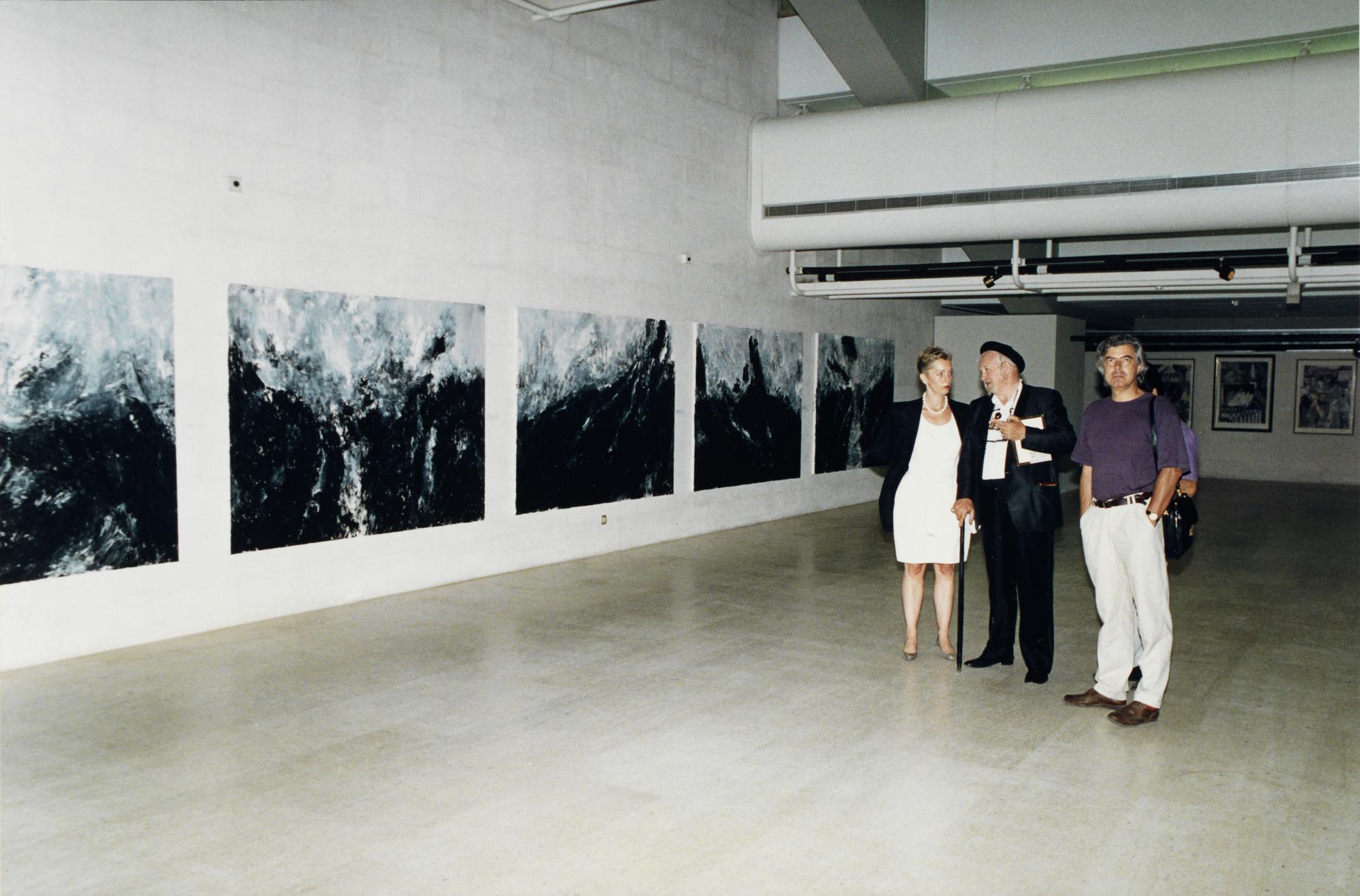
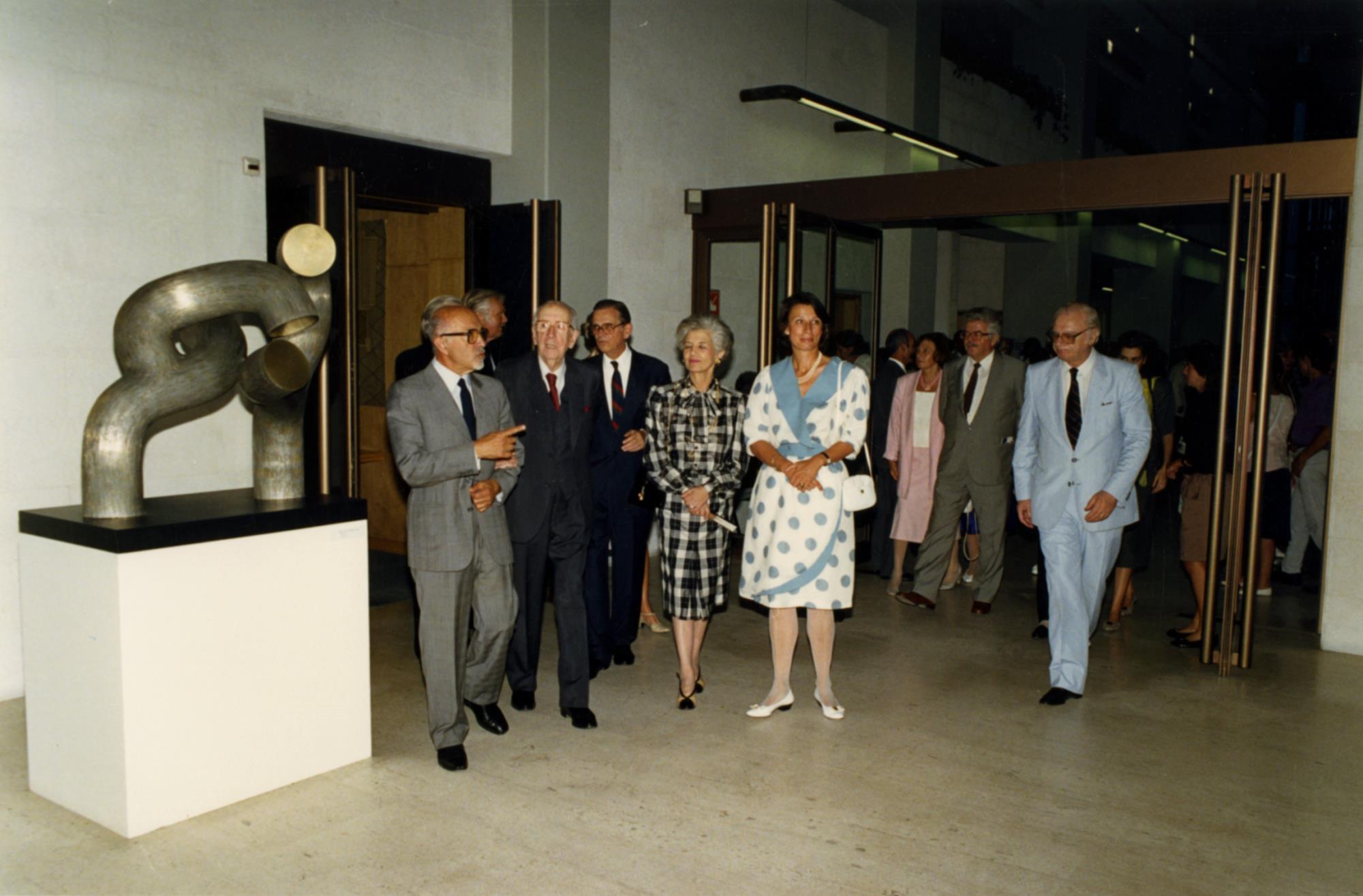
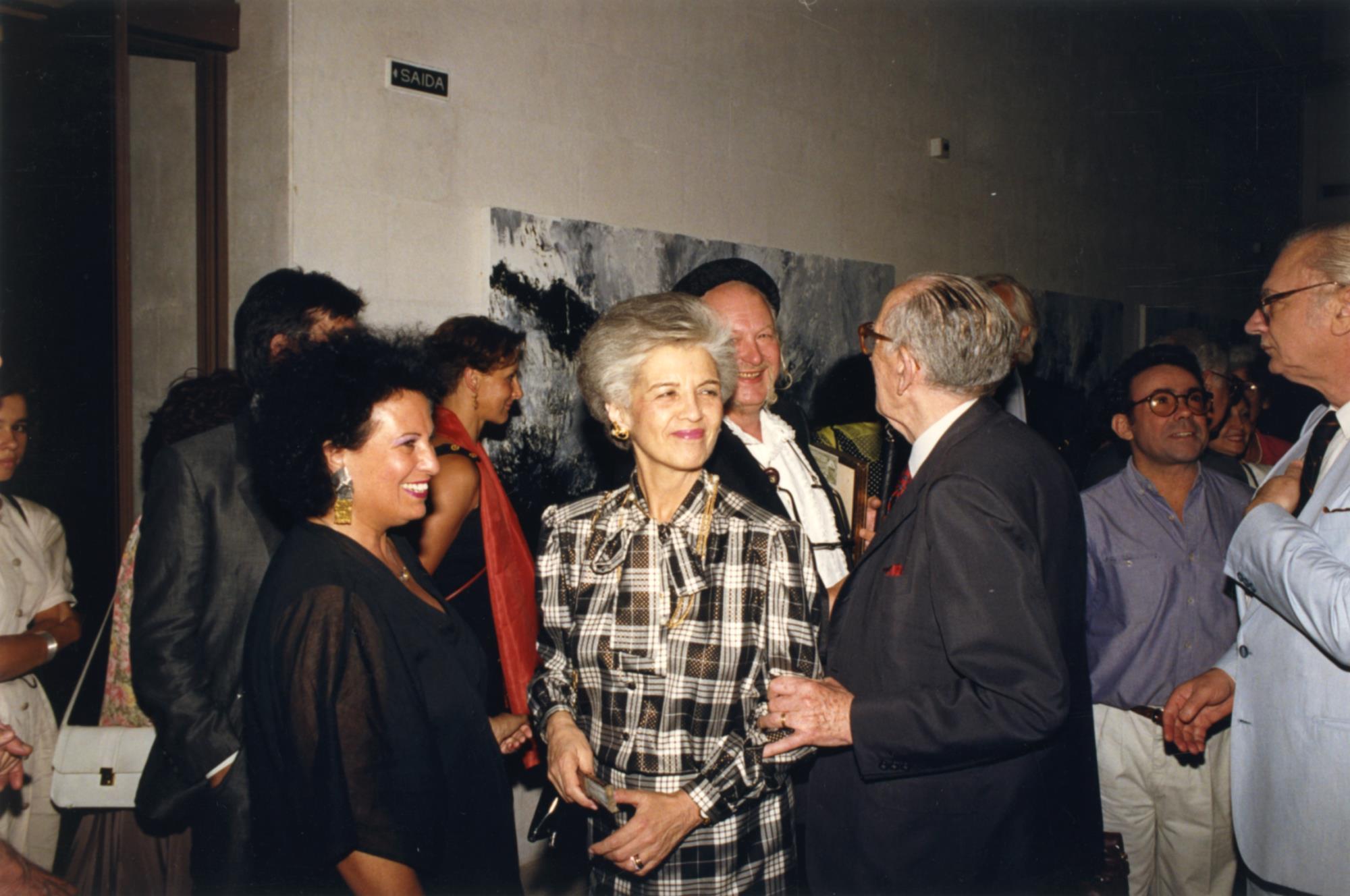
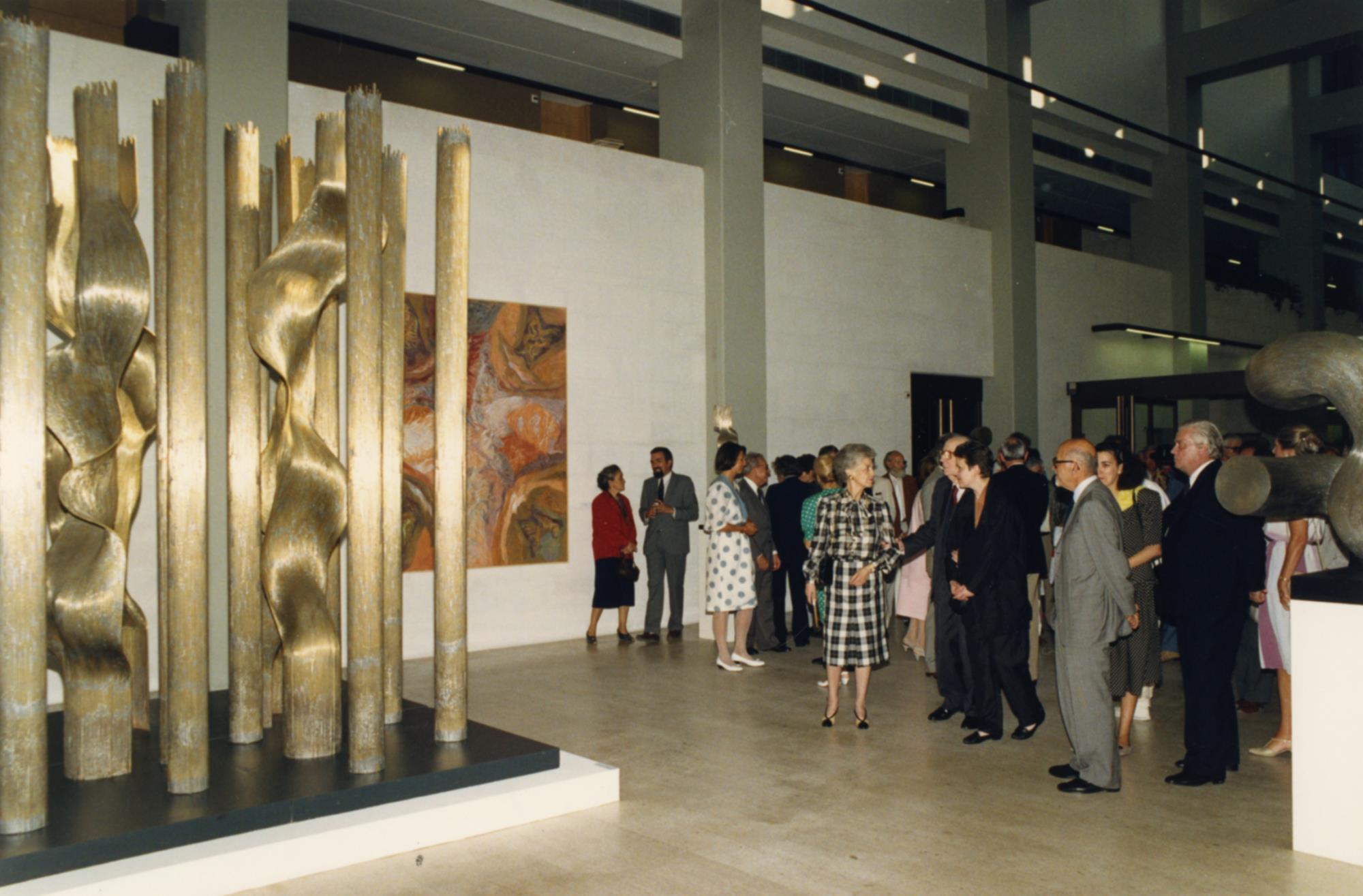

Documentação

Maria do Céu Baptista a Volkmar Schaefer
11 set 1989
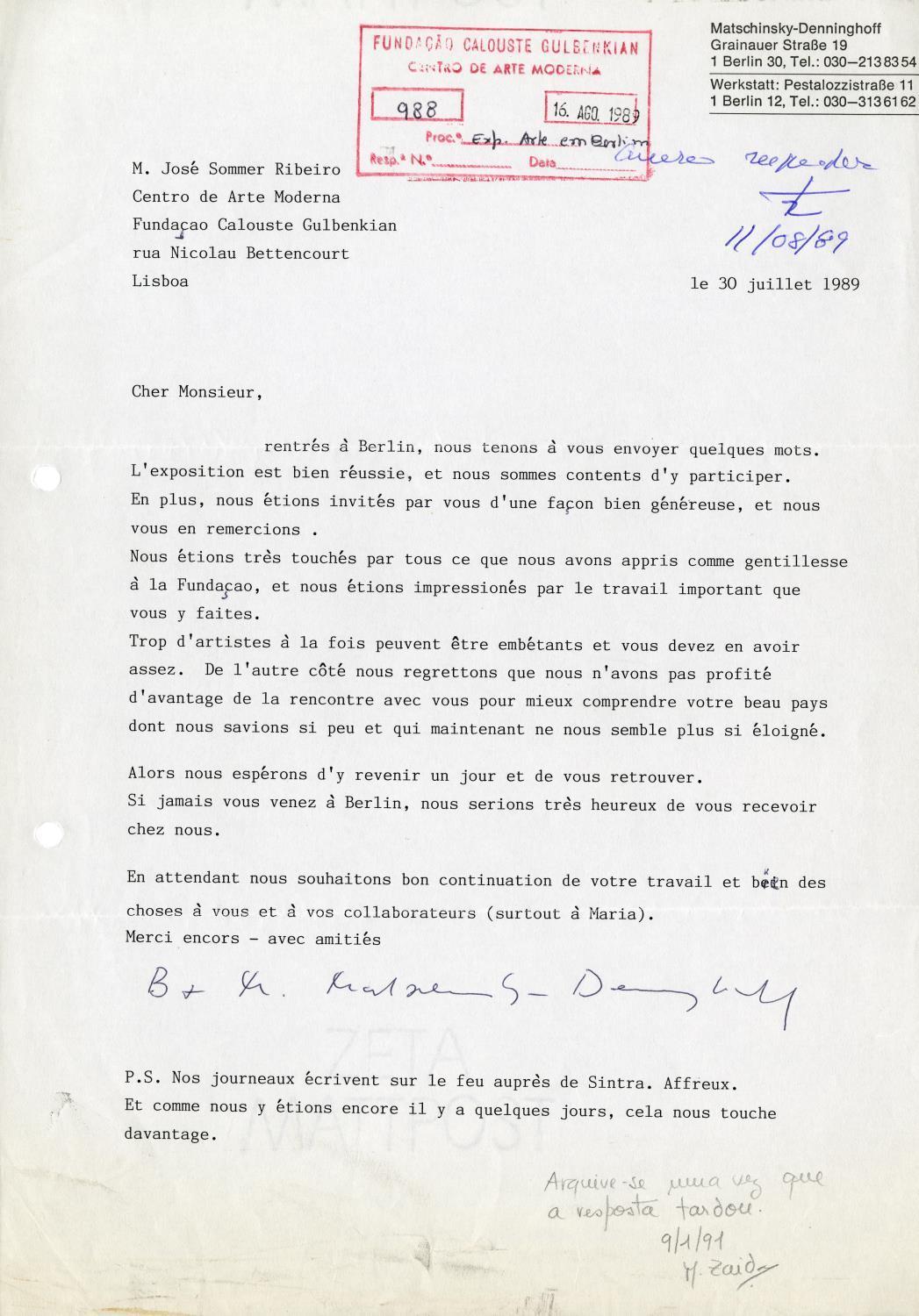
AA. VV. a José Sommer Ribeiro
30 jul 1989
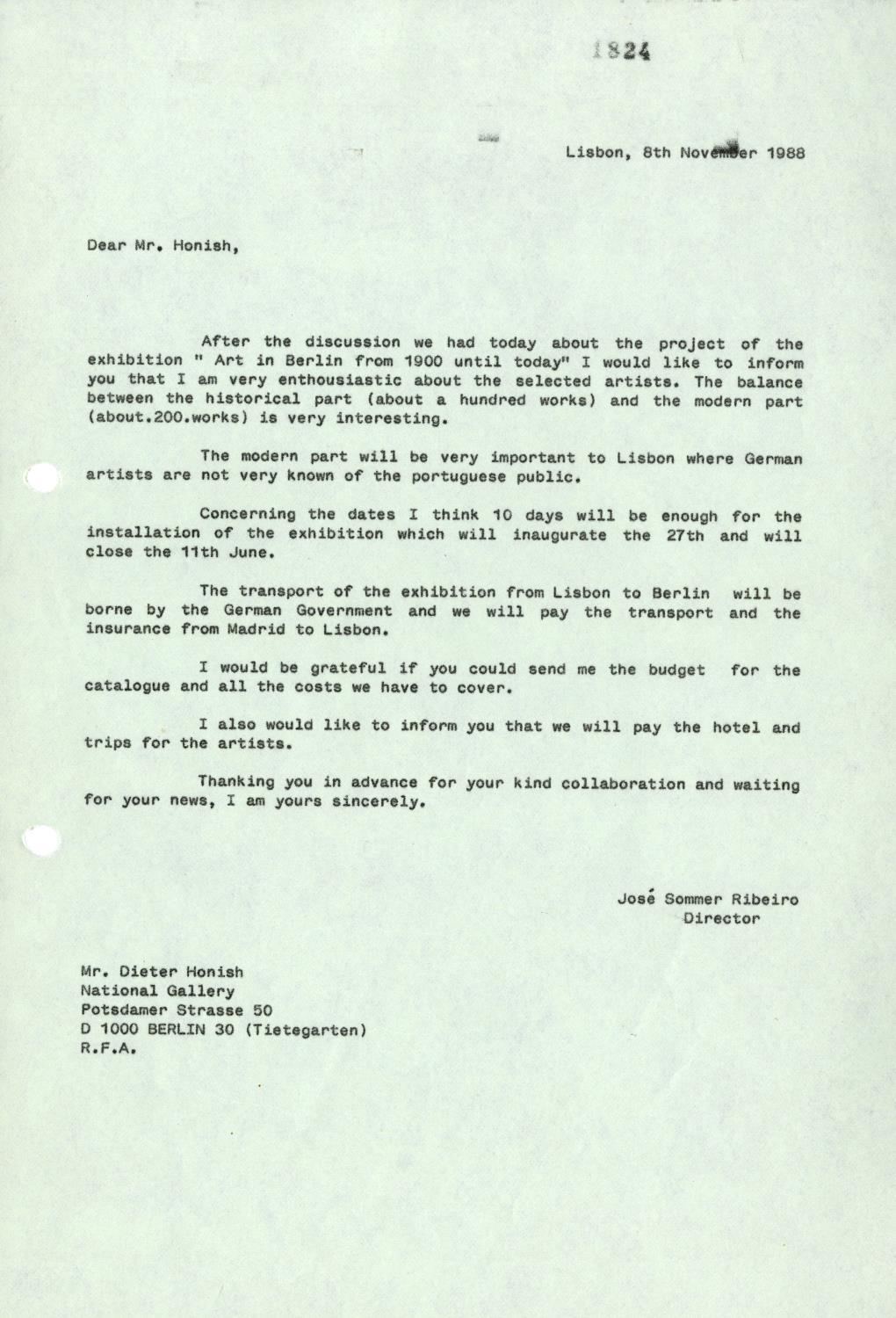
José Sommer Ribeiro a Dieter Hönisch
8 nov 1988
Periódicos
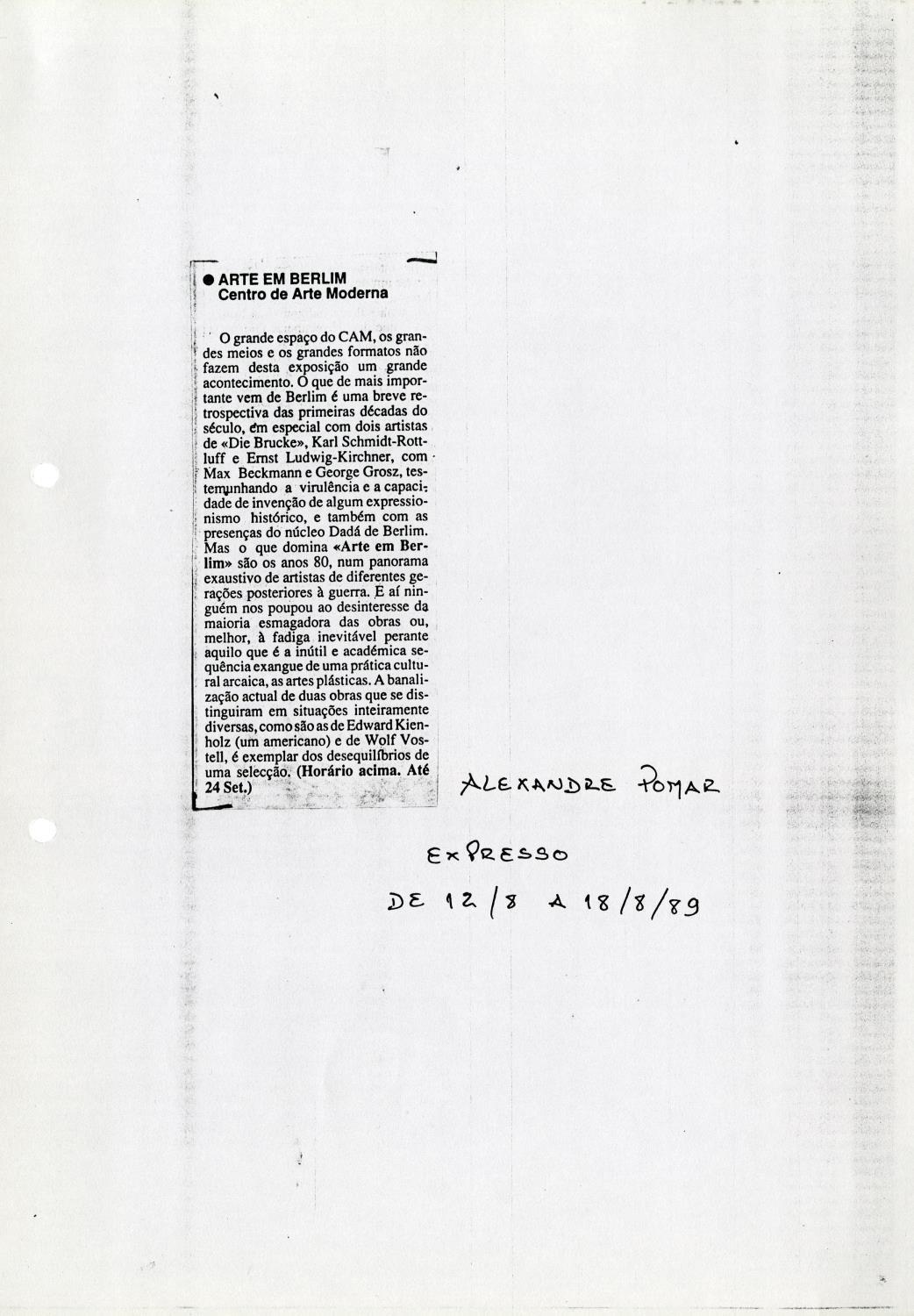
Expresso
Lisboa, 12 ago 1989
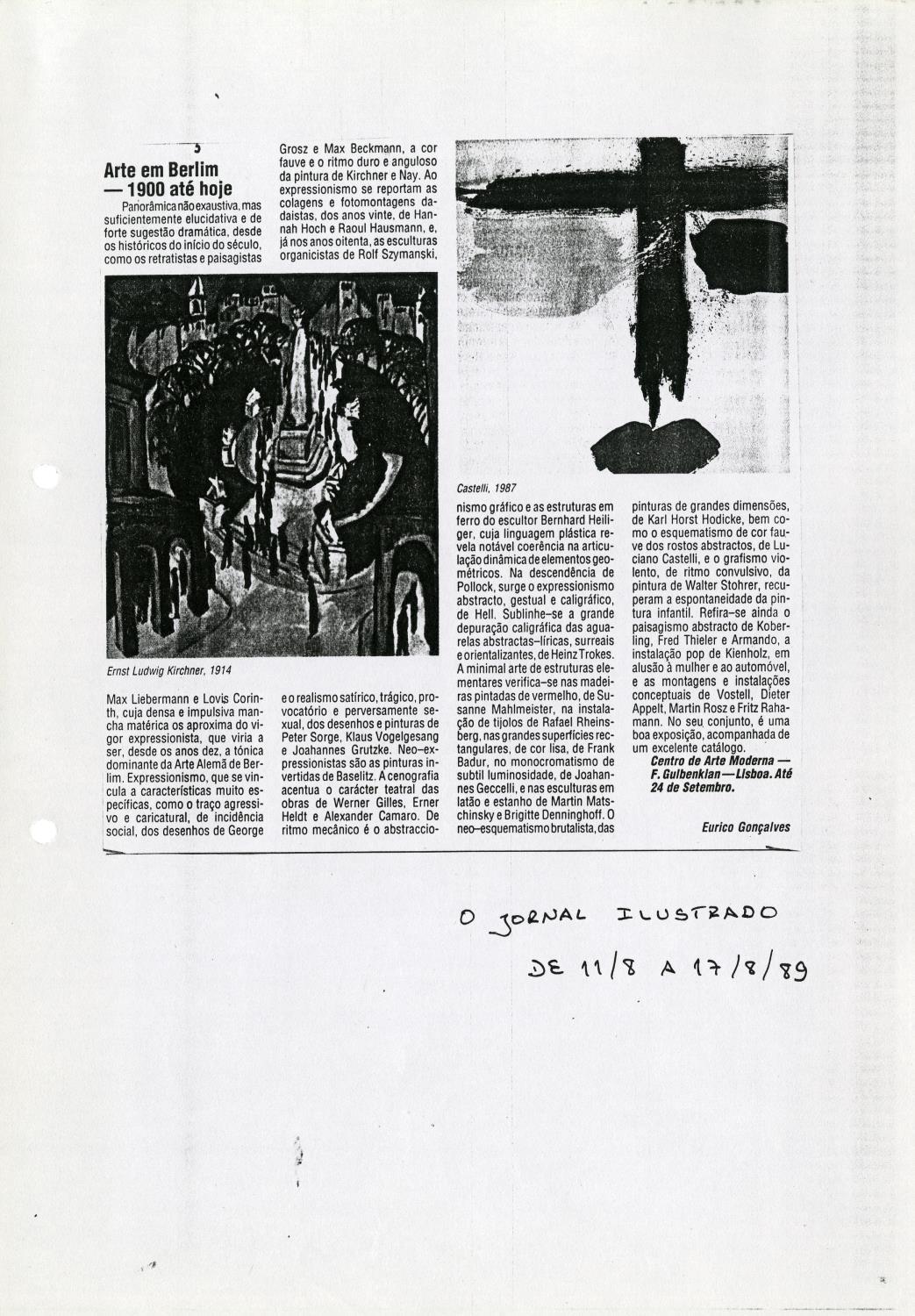
O Jornal
Lisboa, 11 ago 1989

Diário de Notícias
Lisboa, 6 ago 1989
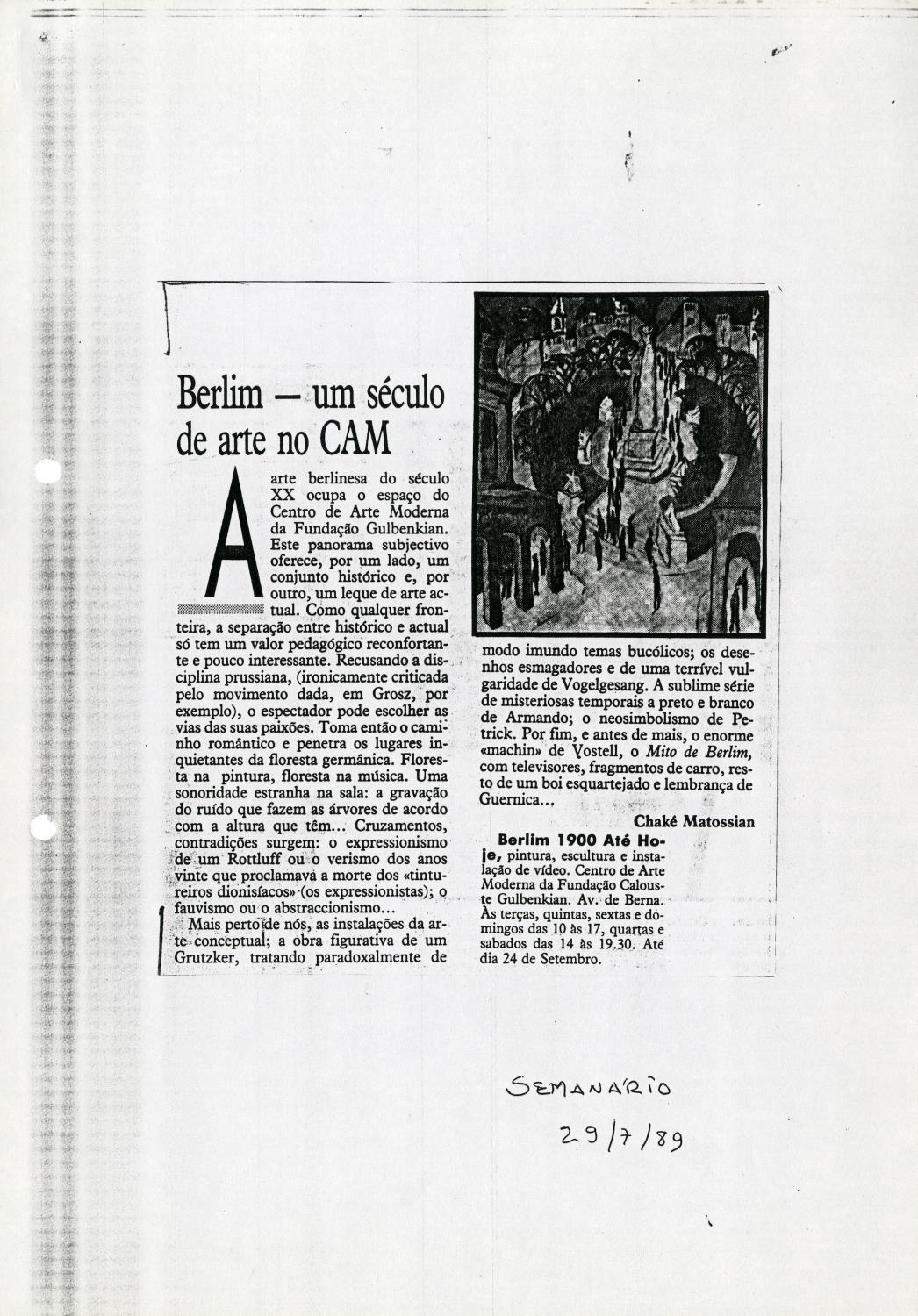
Semanário
Lisboa, 29 jul 1989
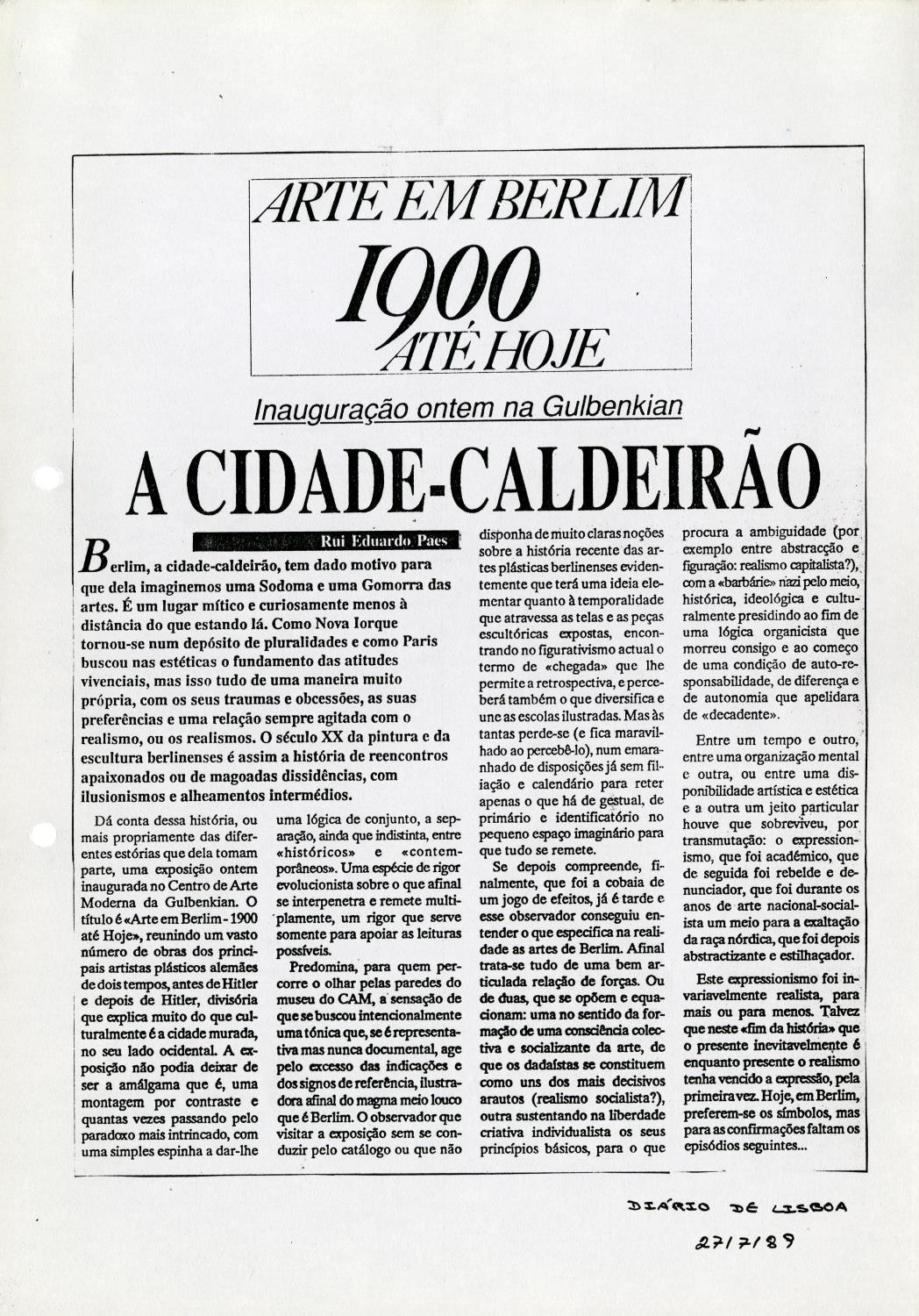
Diário de Lisboa
Lisboa, 27 jul 1989
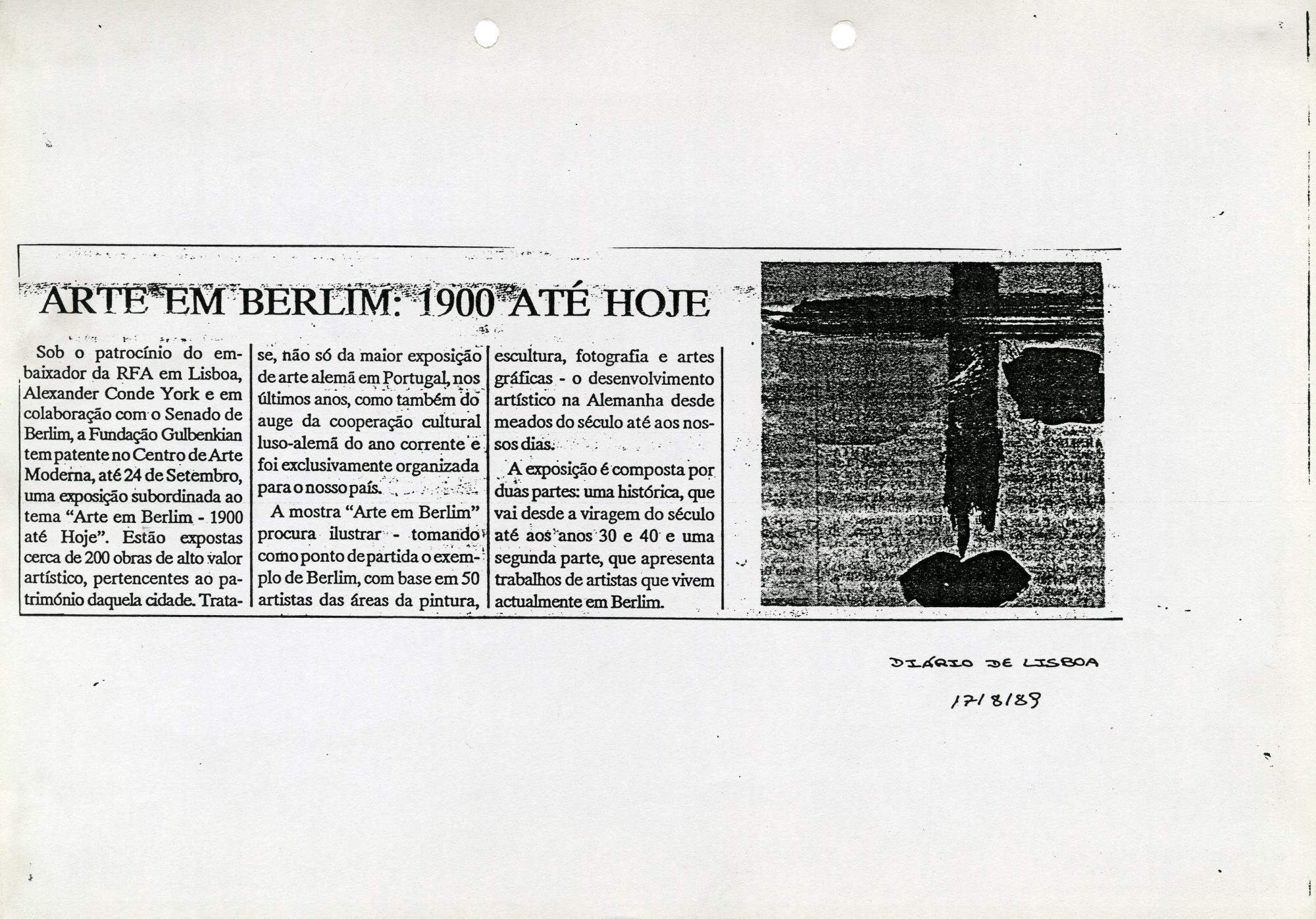
Diário de Lisboa
Lisboa, 17 ago 1989
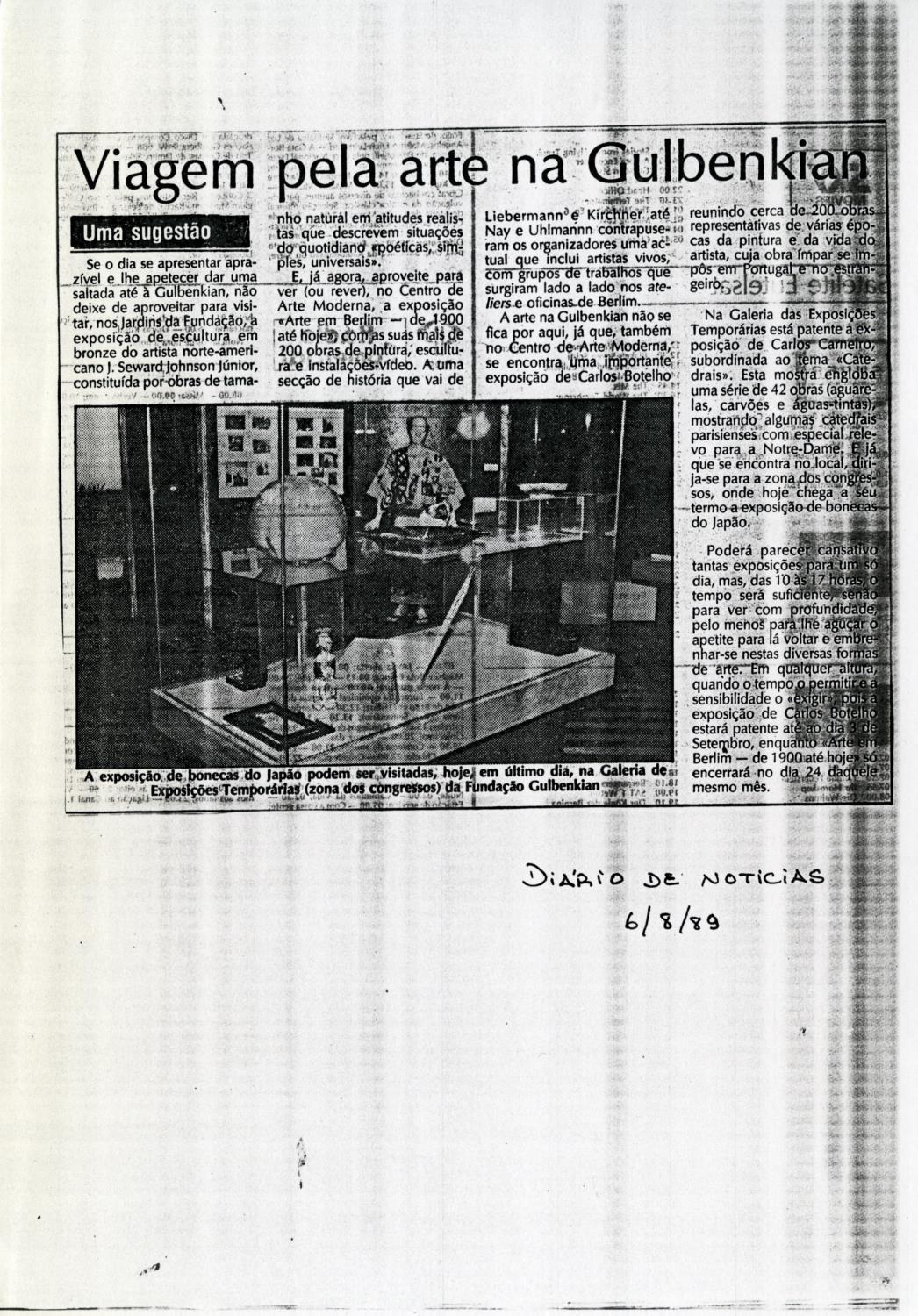
Diário de Notícias
Lisboa, 6 ago 1989
Fontes Arquivísticas
Exposições Relacionadas
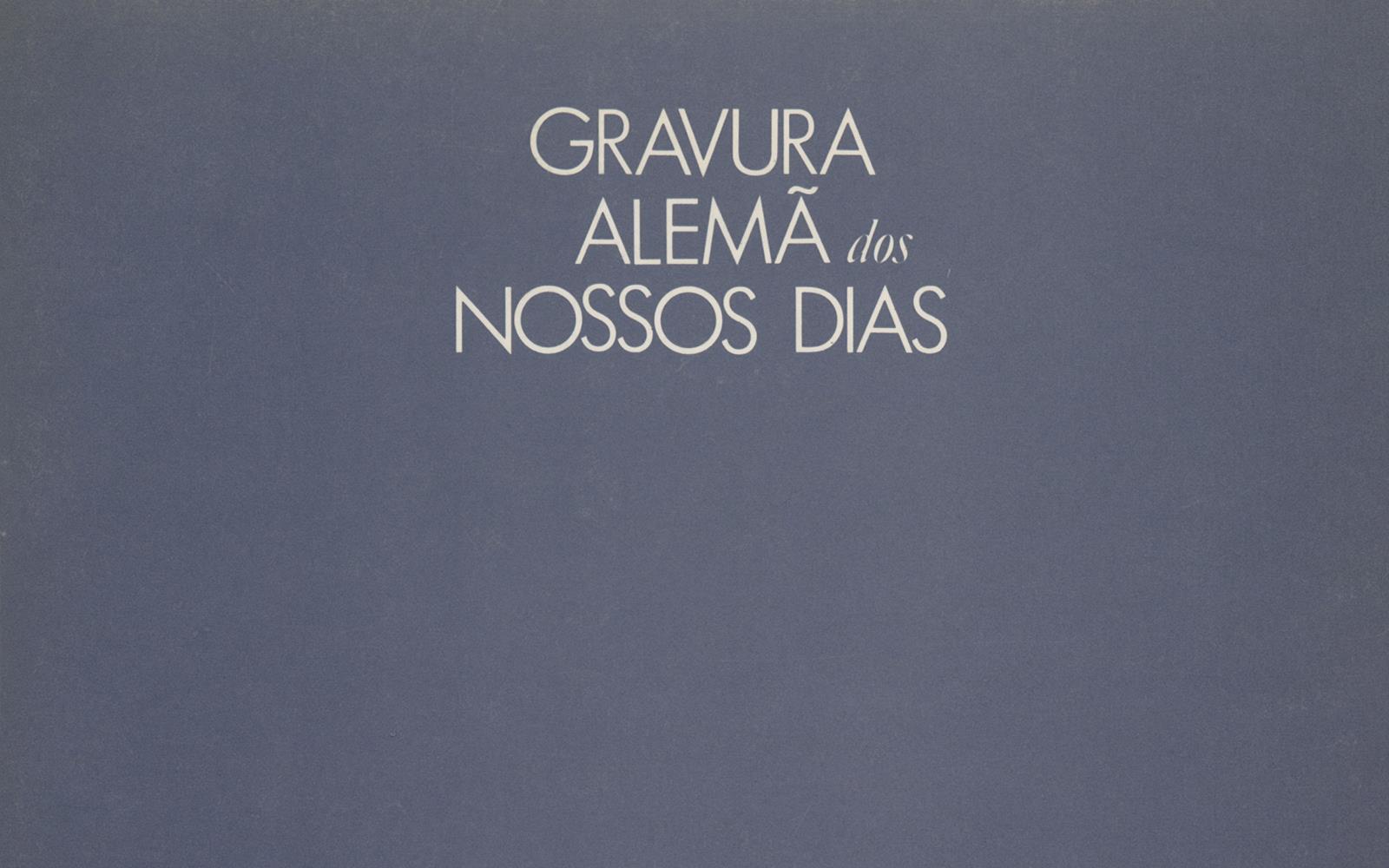
Gravura Alemã dos Nossos Dias
1981 / Itinerância [organização externa]

Jochen Gerz. A Verdadeira Janela para o Mundo
1978 / Itinerância Portugal
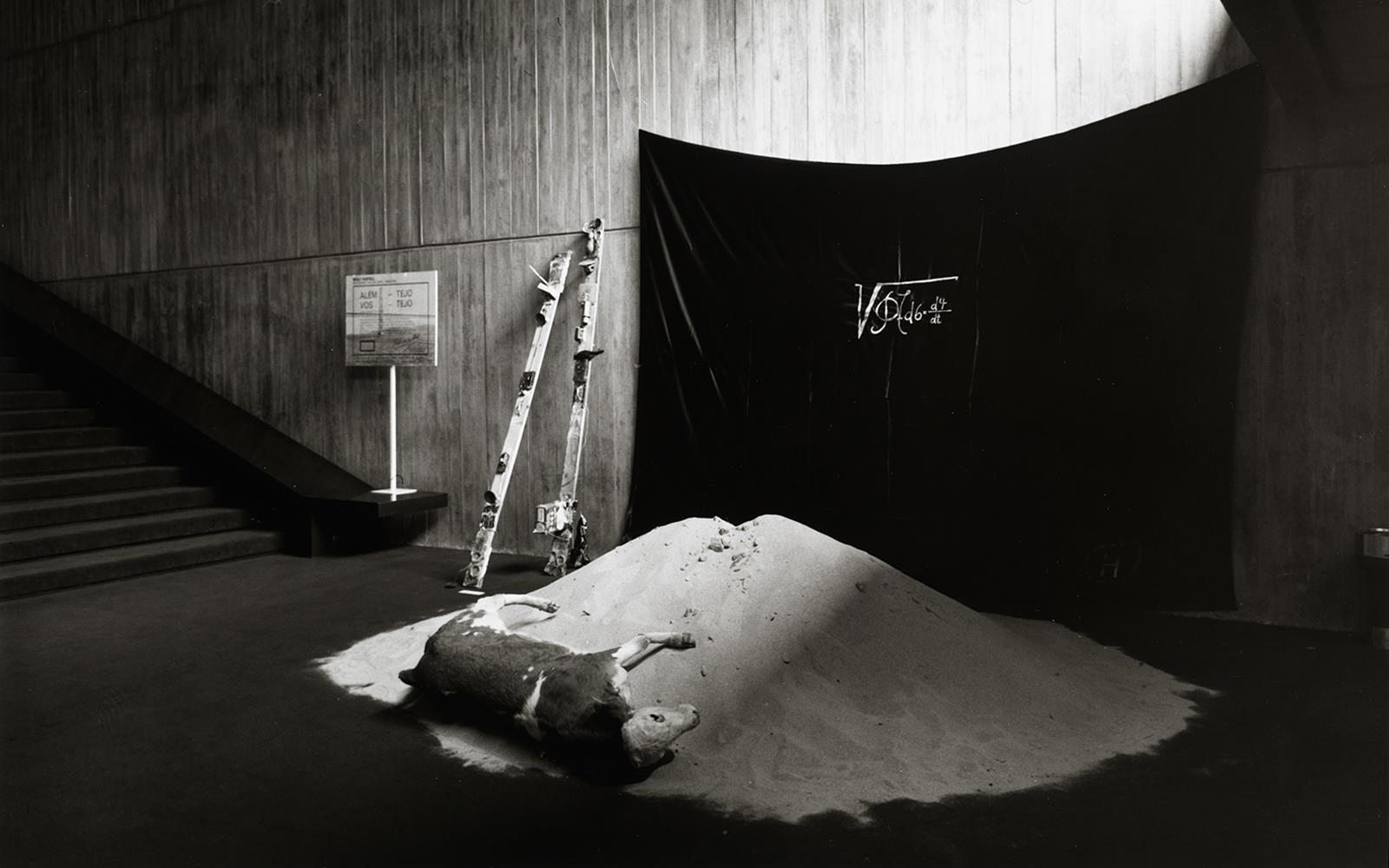
Wolf Vostell
1979 / Itinerância Portugal

Robert Schad. Esculturas e Desenhos
1986 / Itinerância Portugal, Espanha
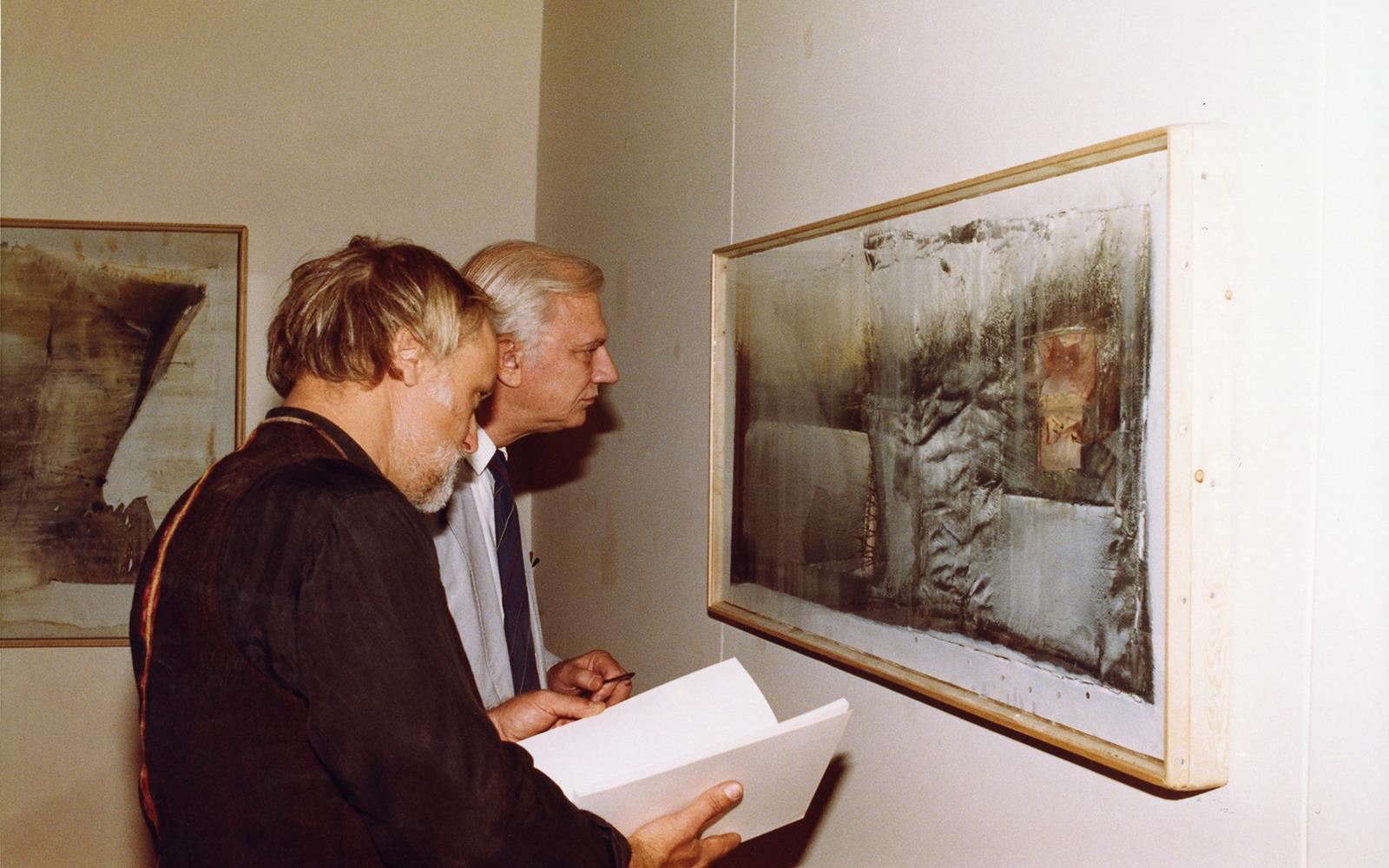
Ulrich Gehret
1988 / Centro de Arte Moderna, Lisboa
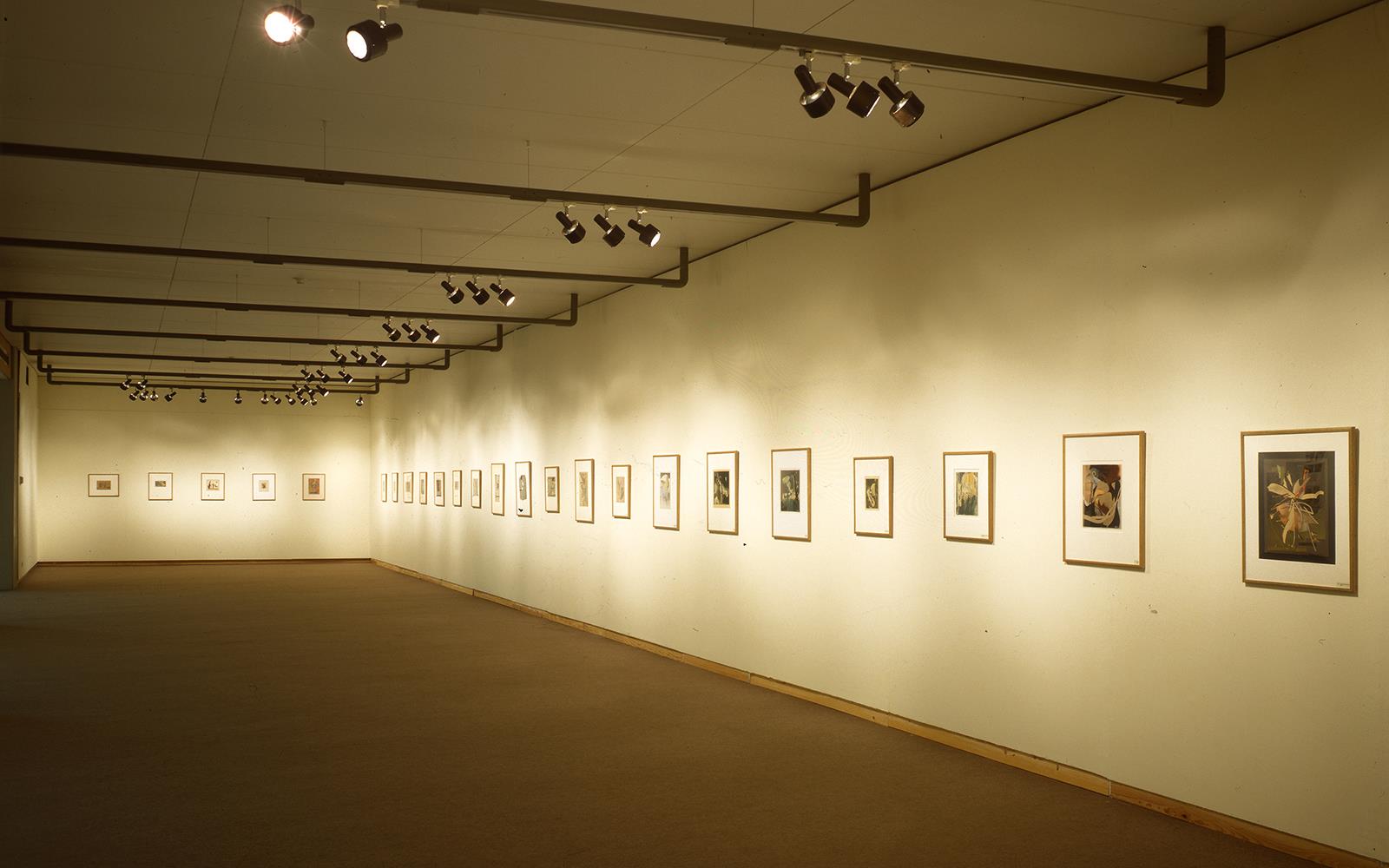
Hannah Höch (1889 – 1978). Colagens
1989 / Itinerância [organização externa]


